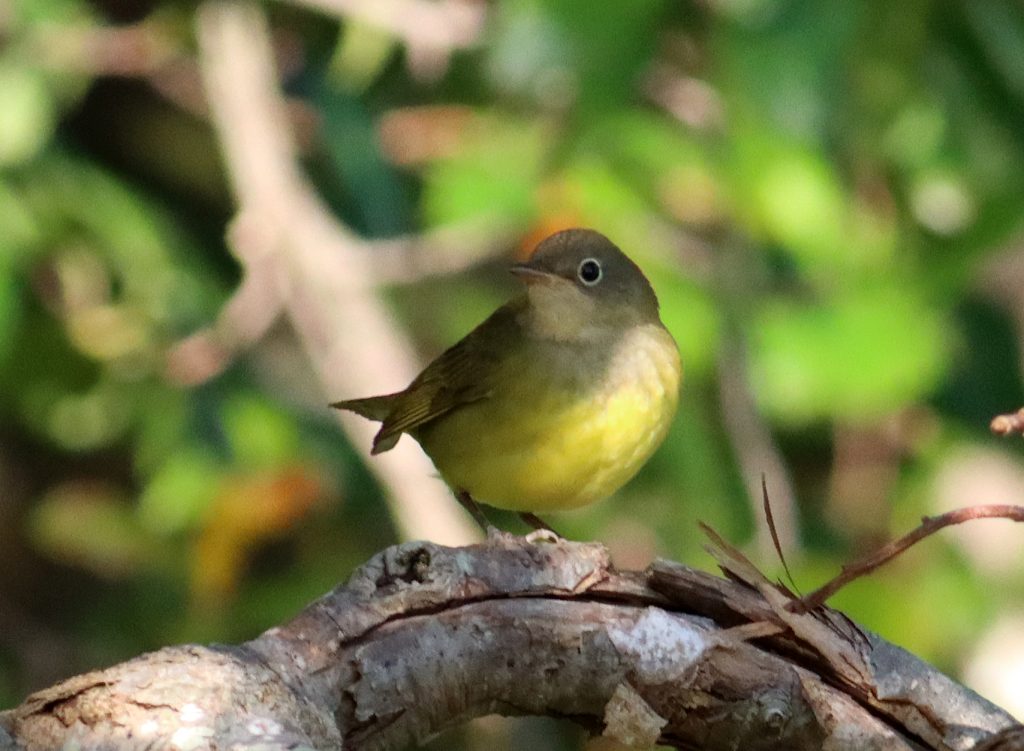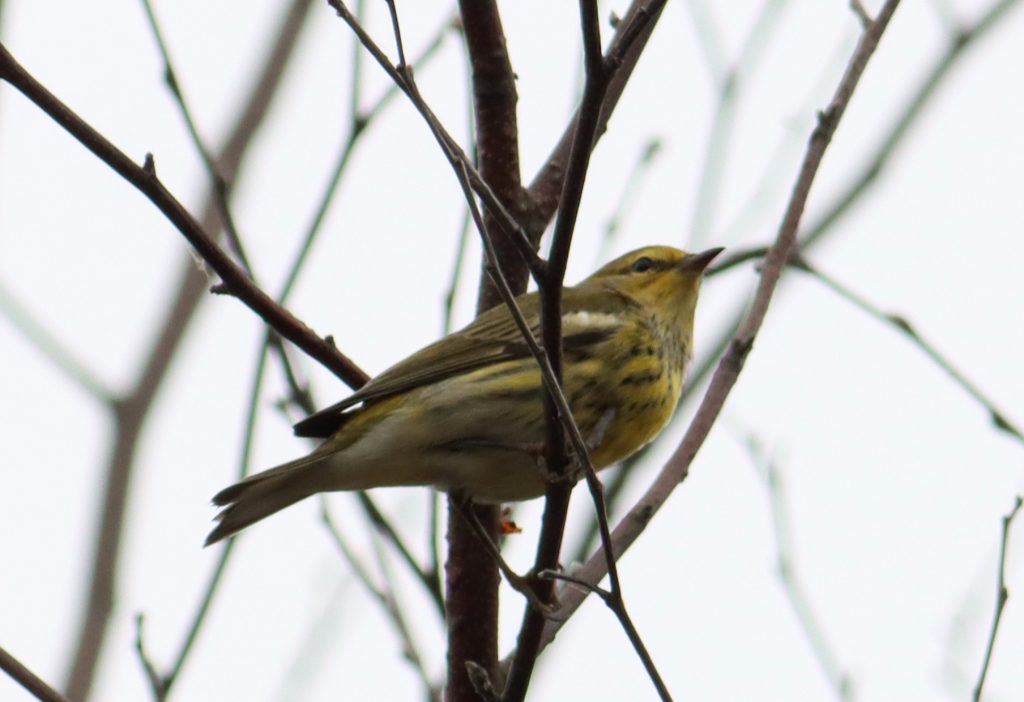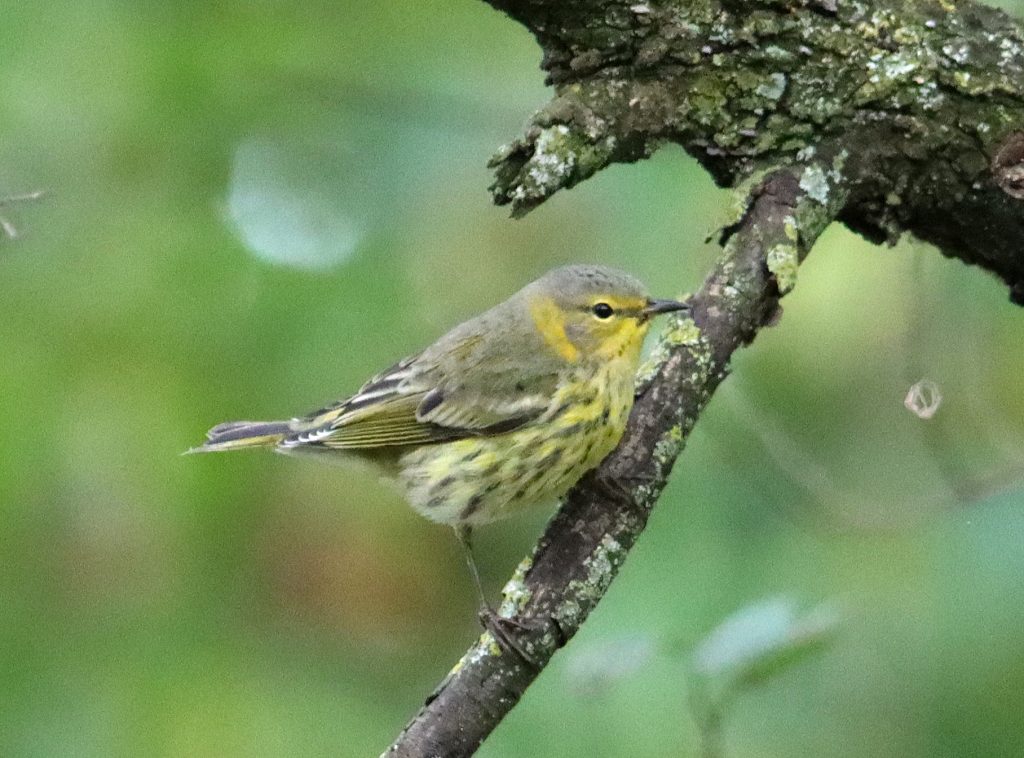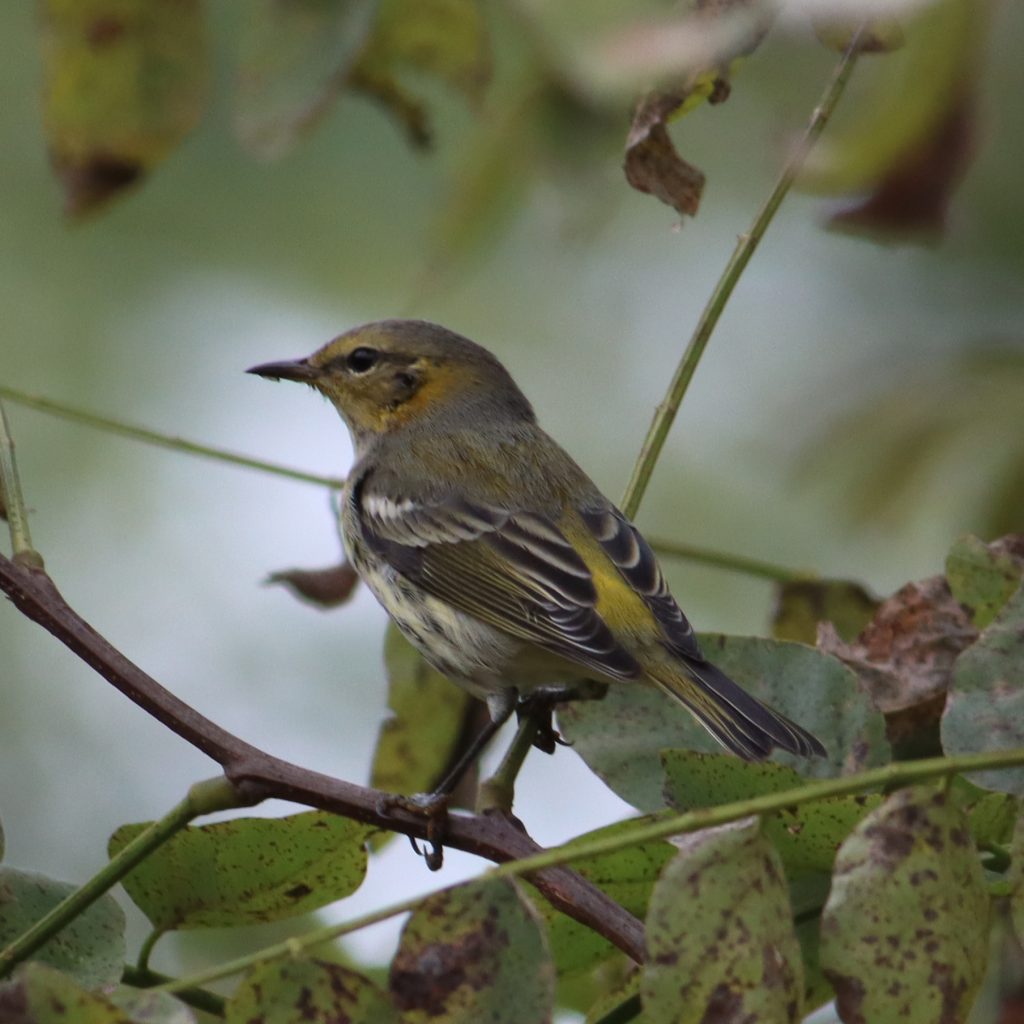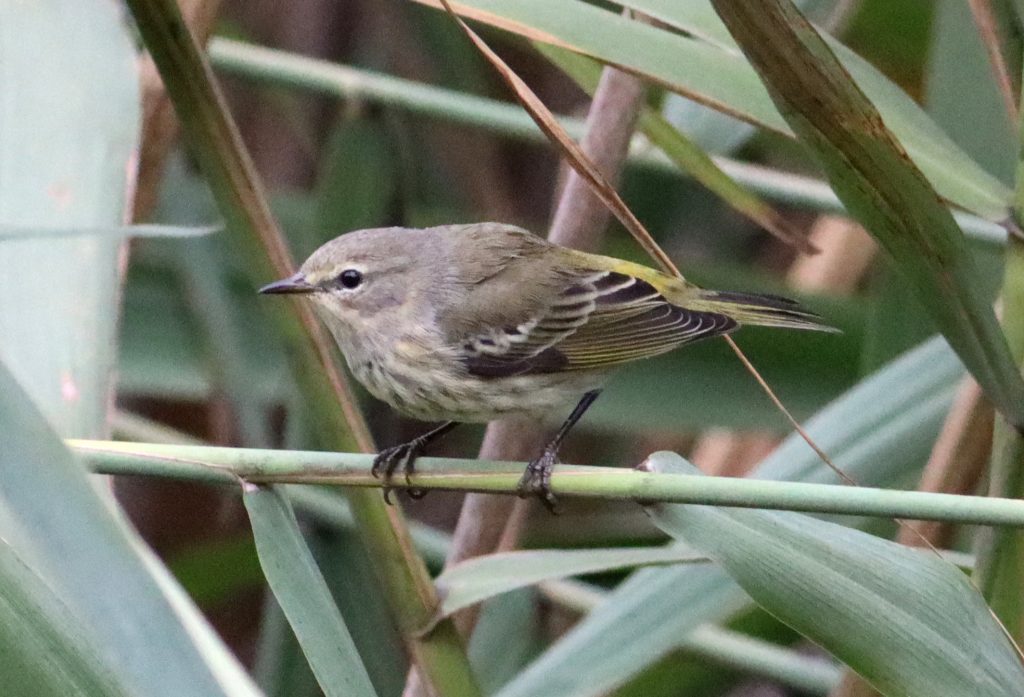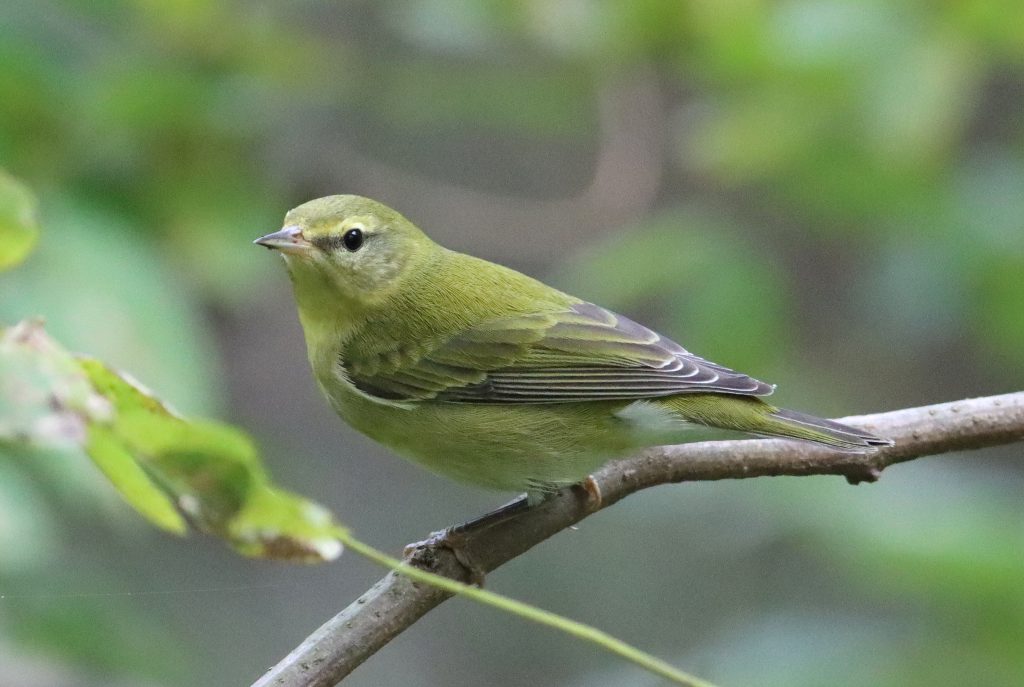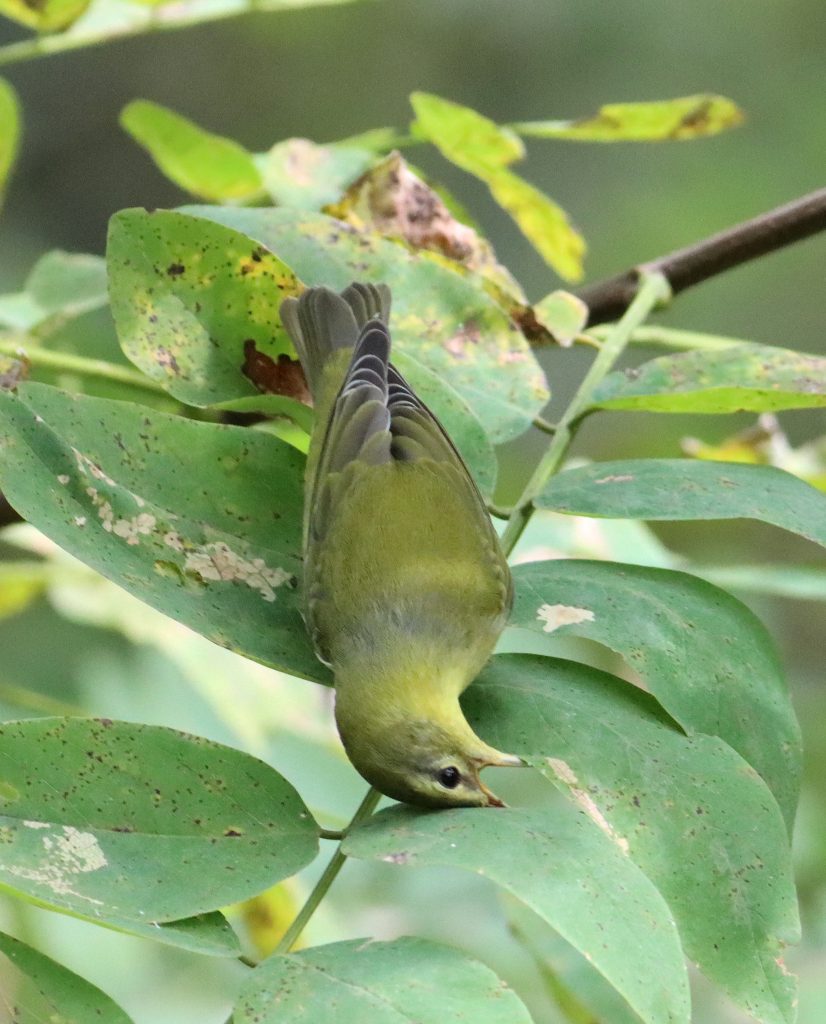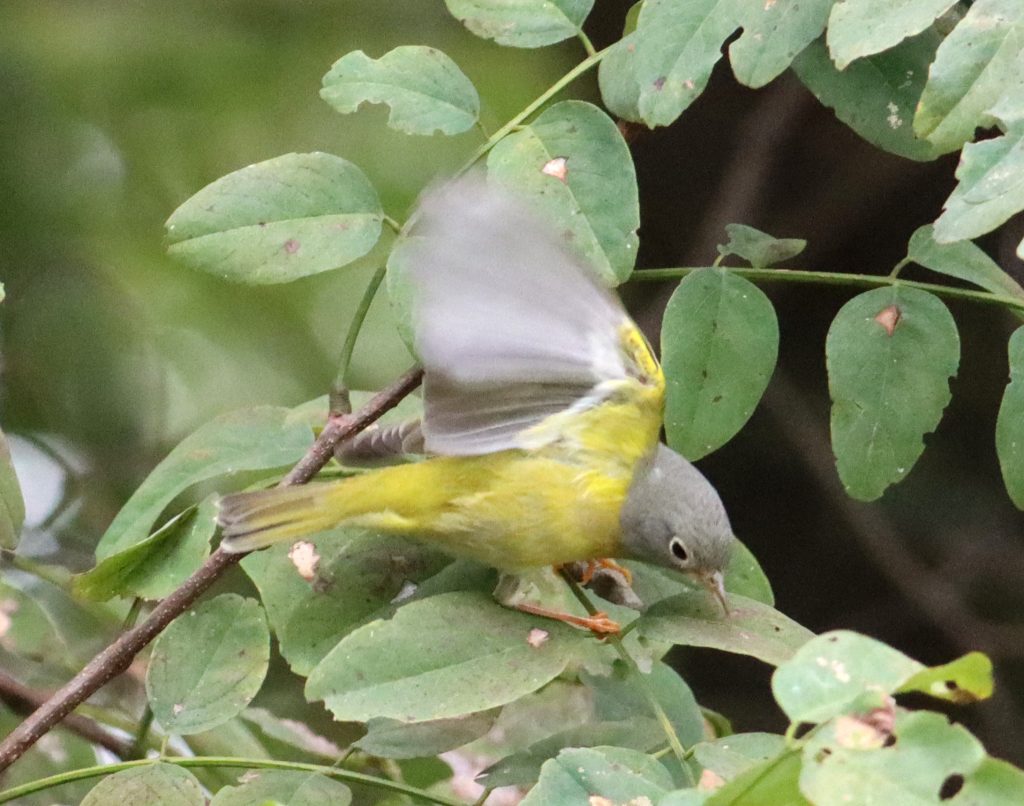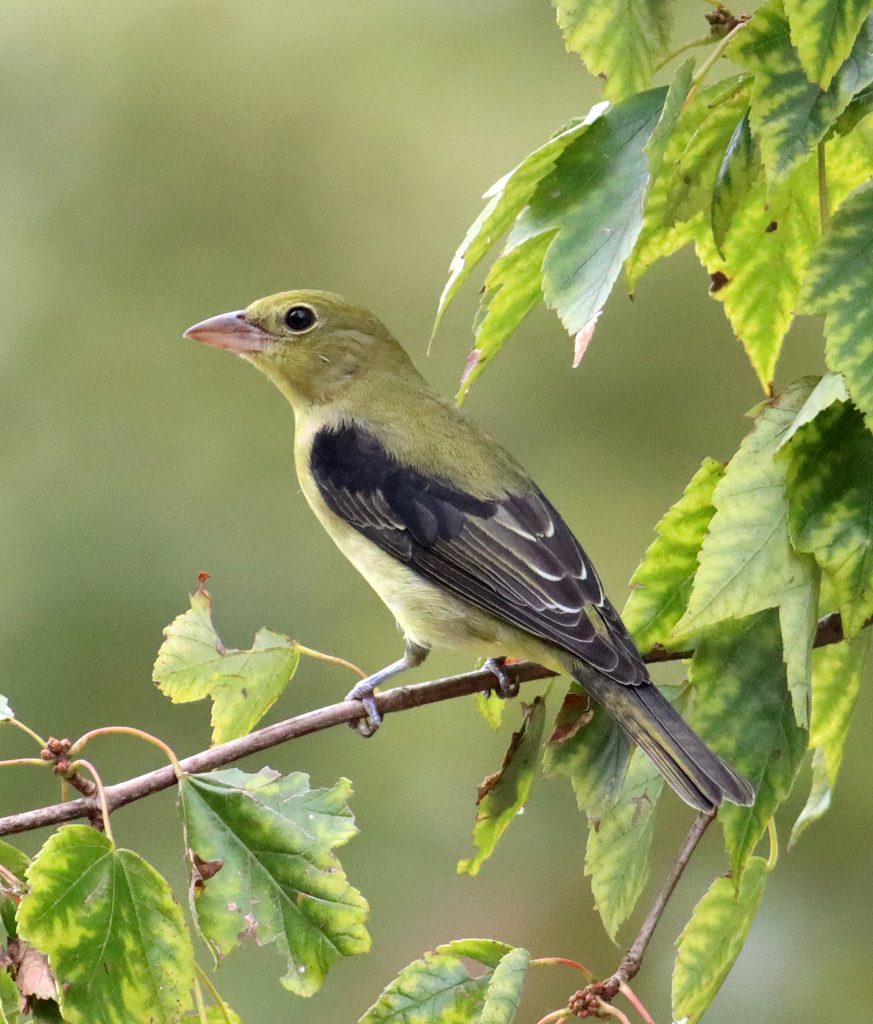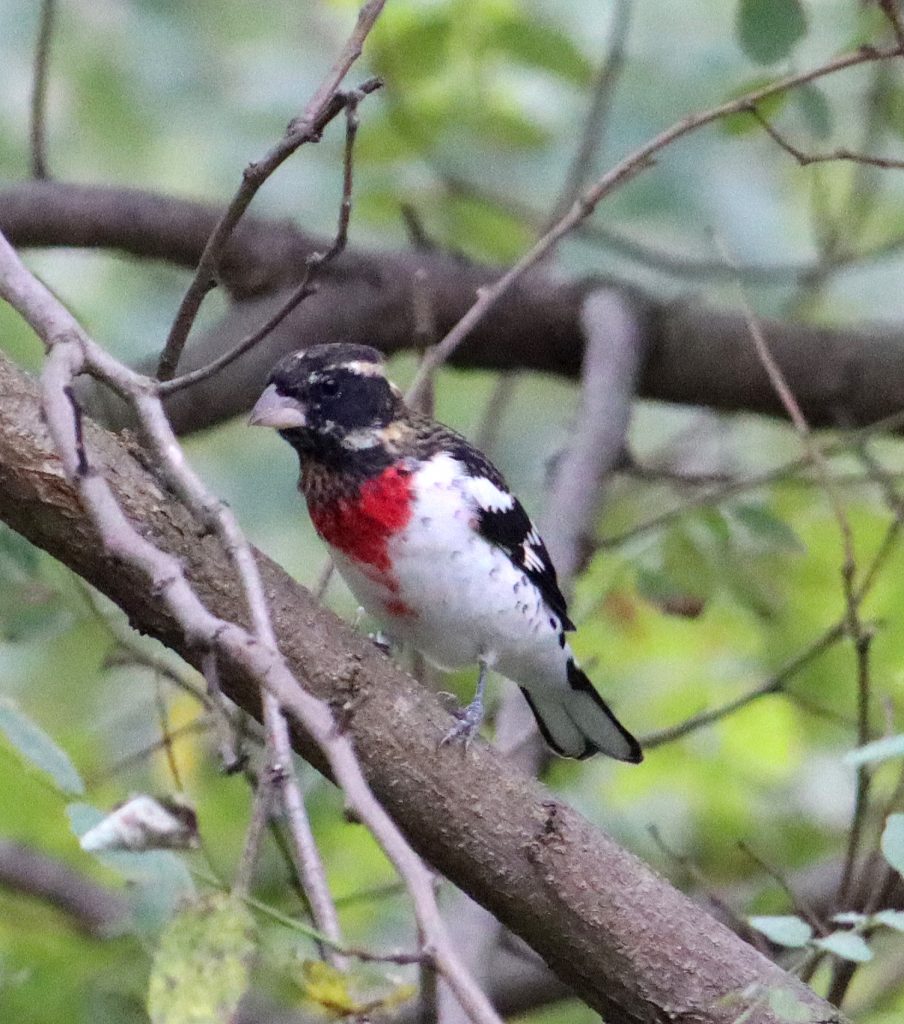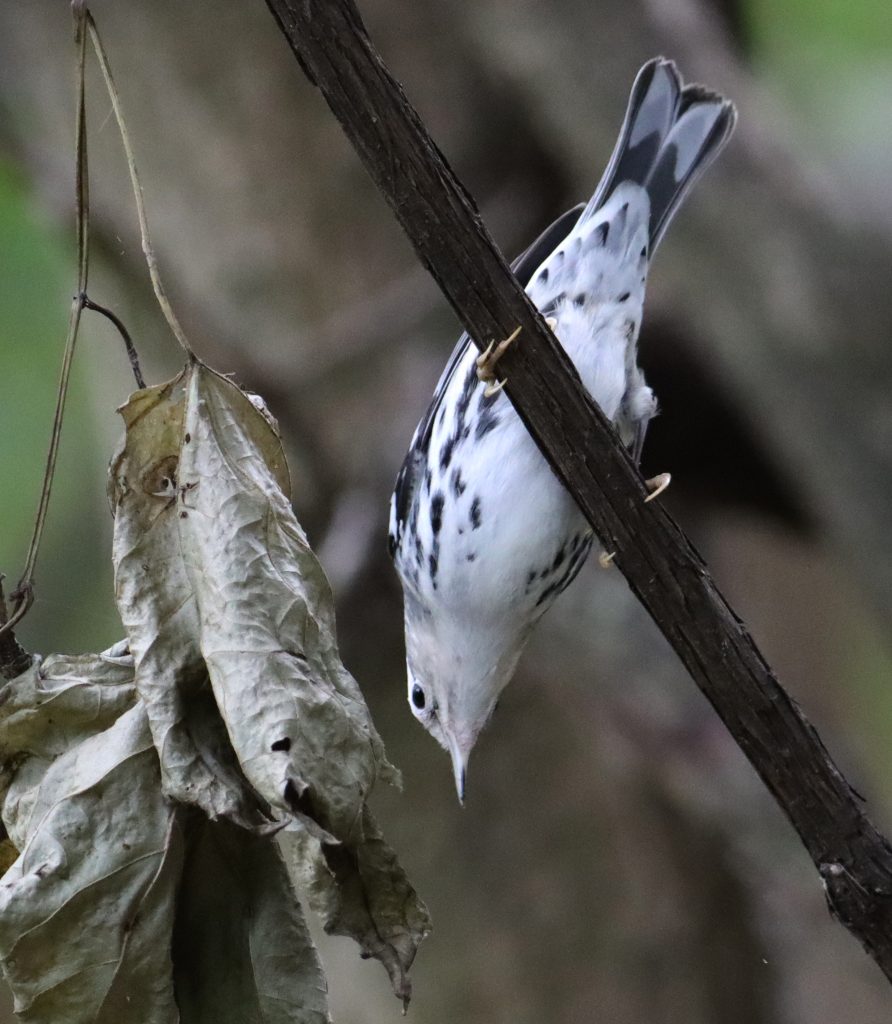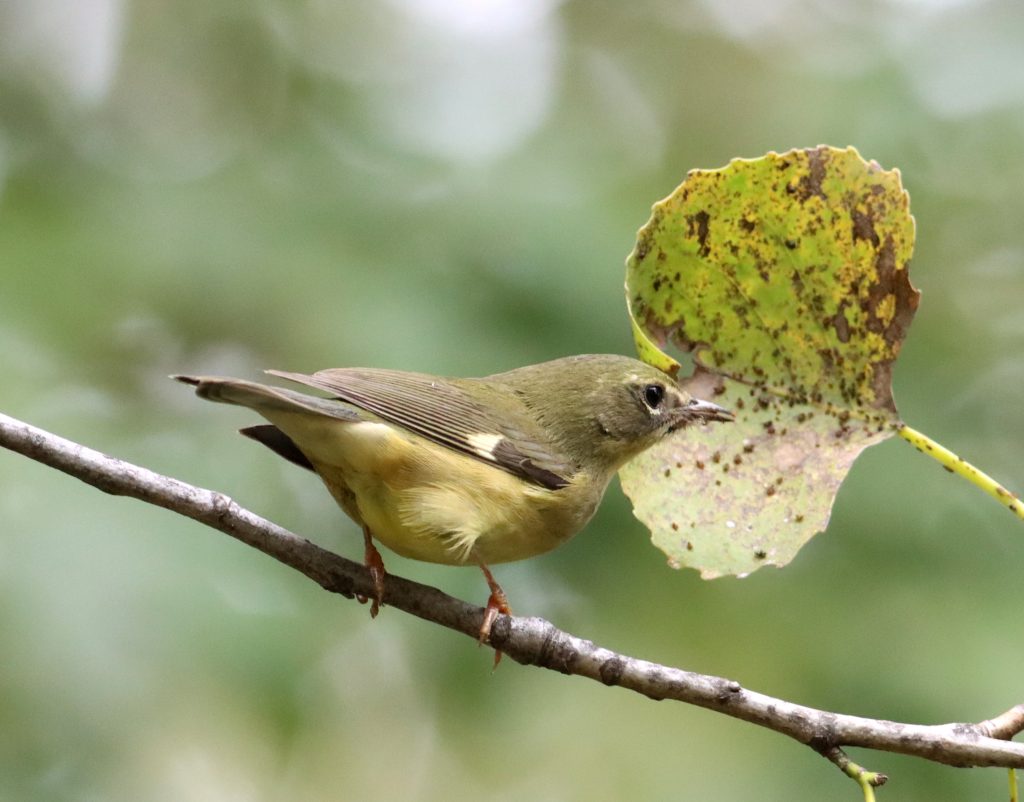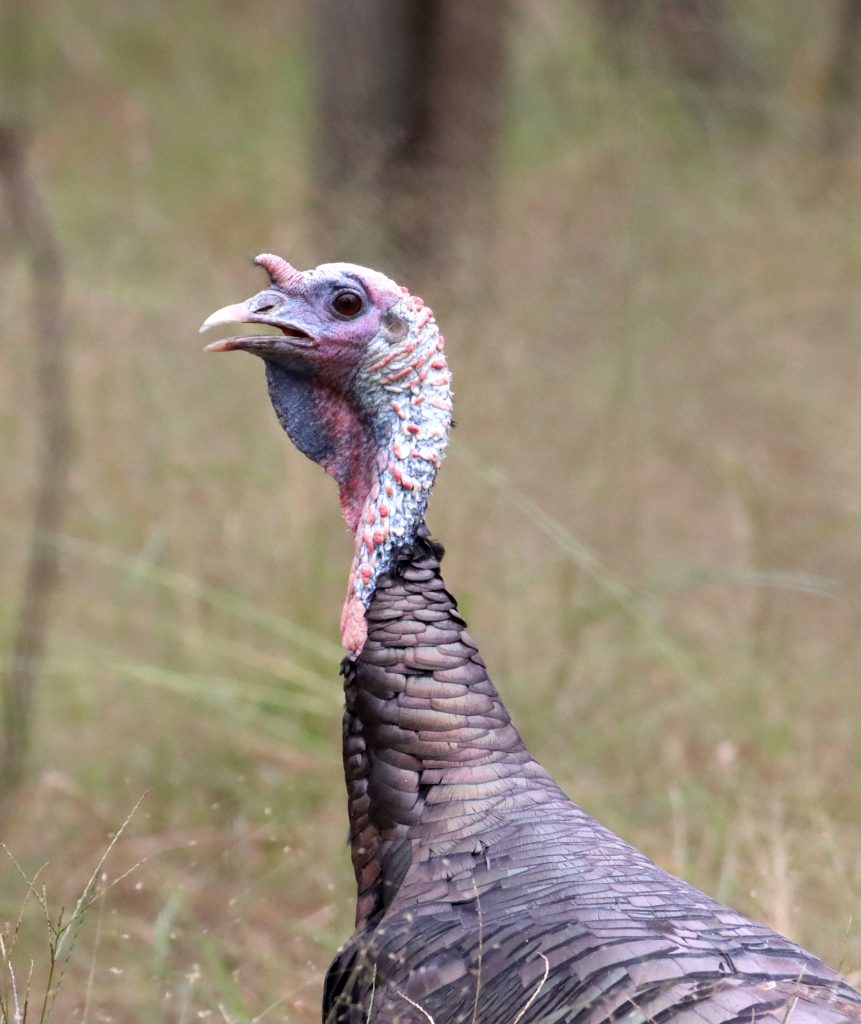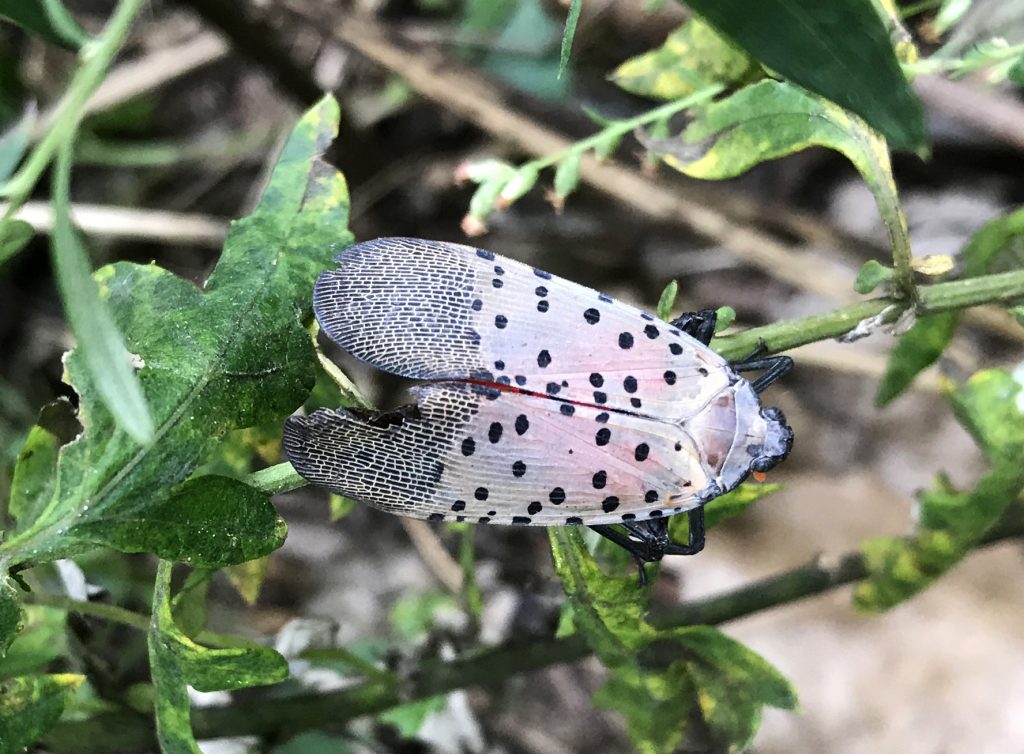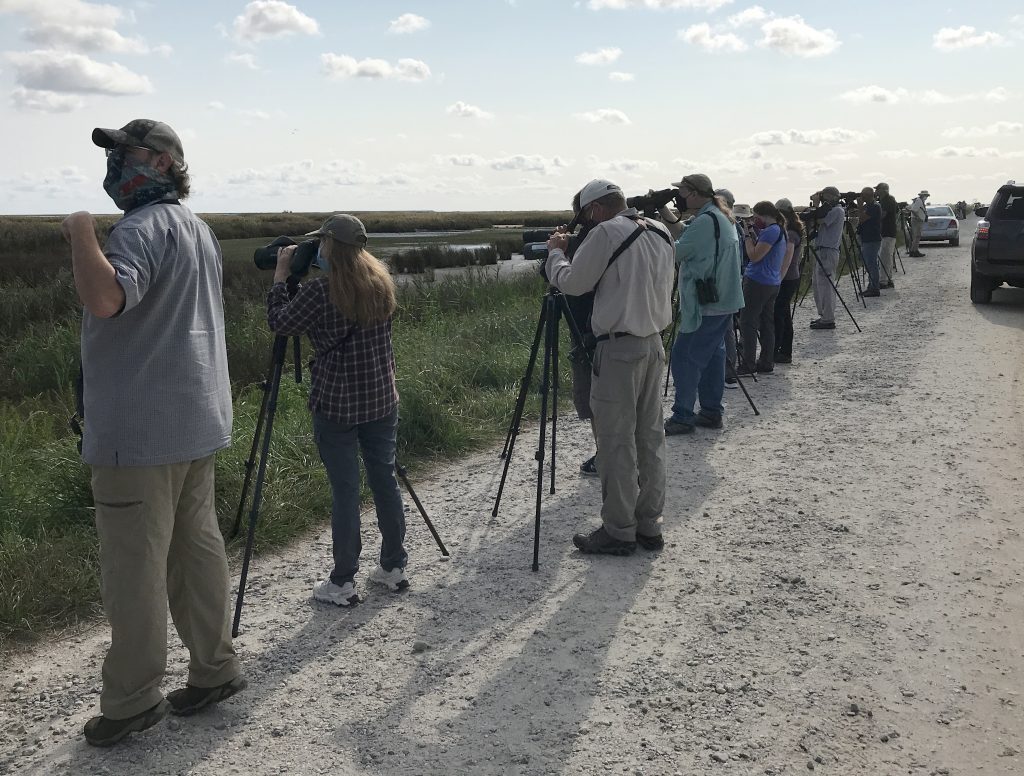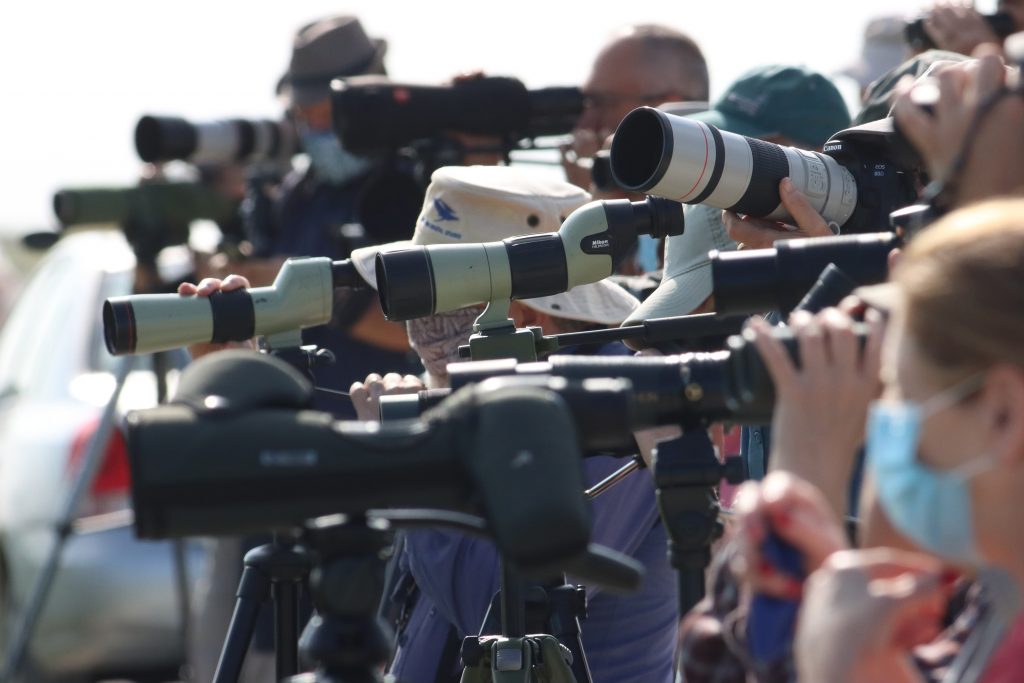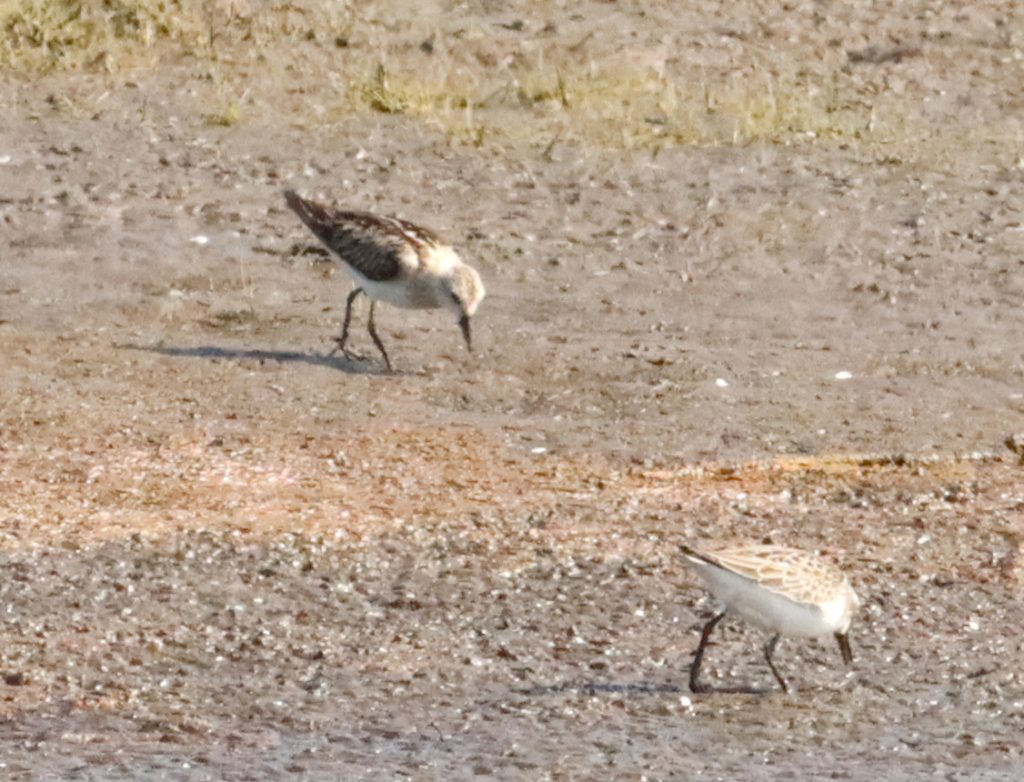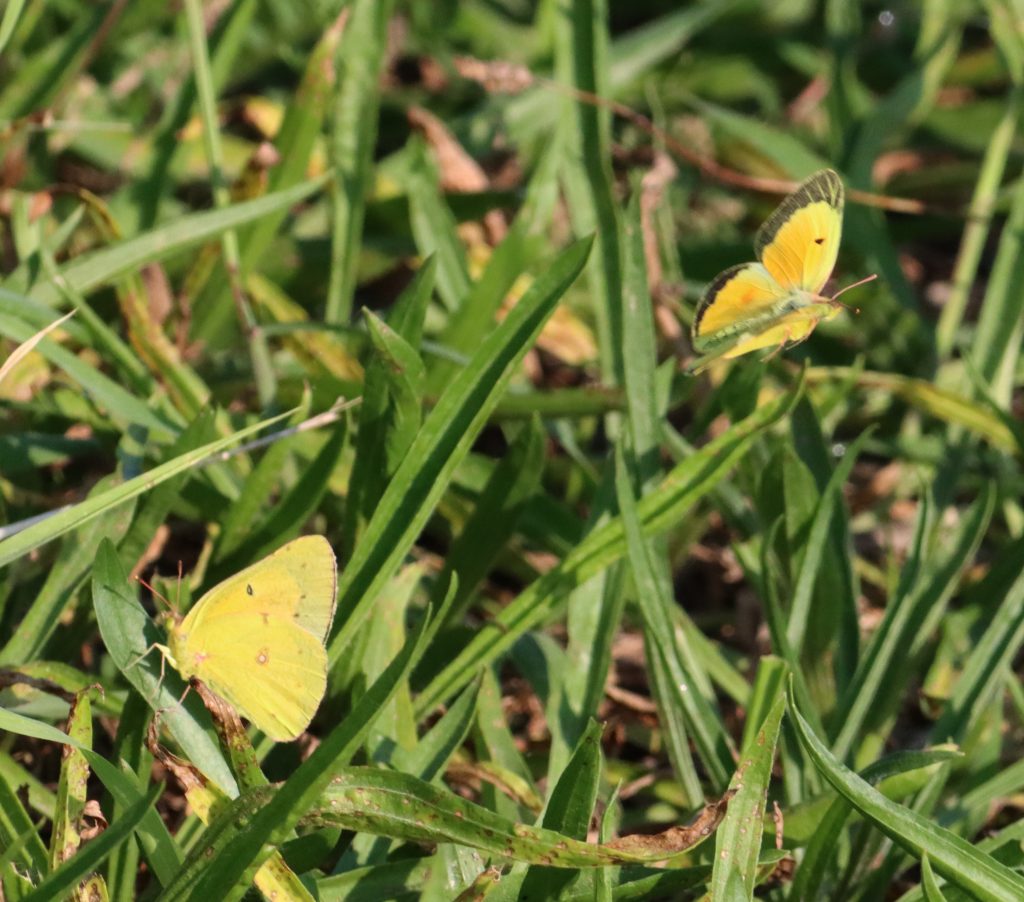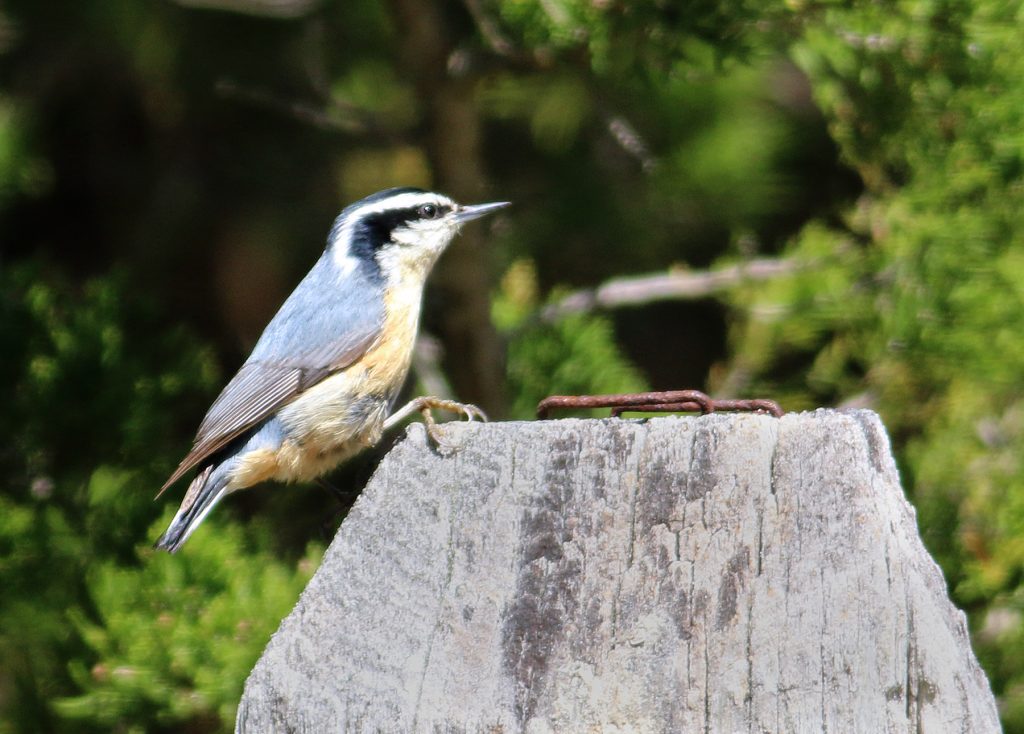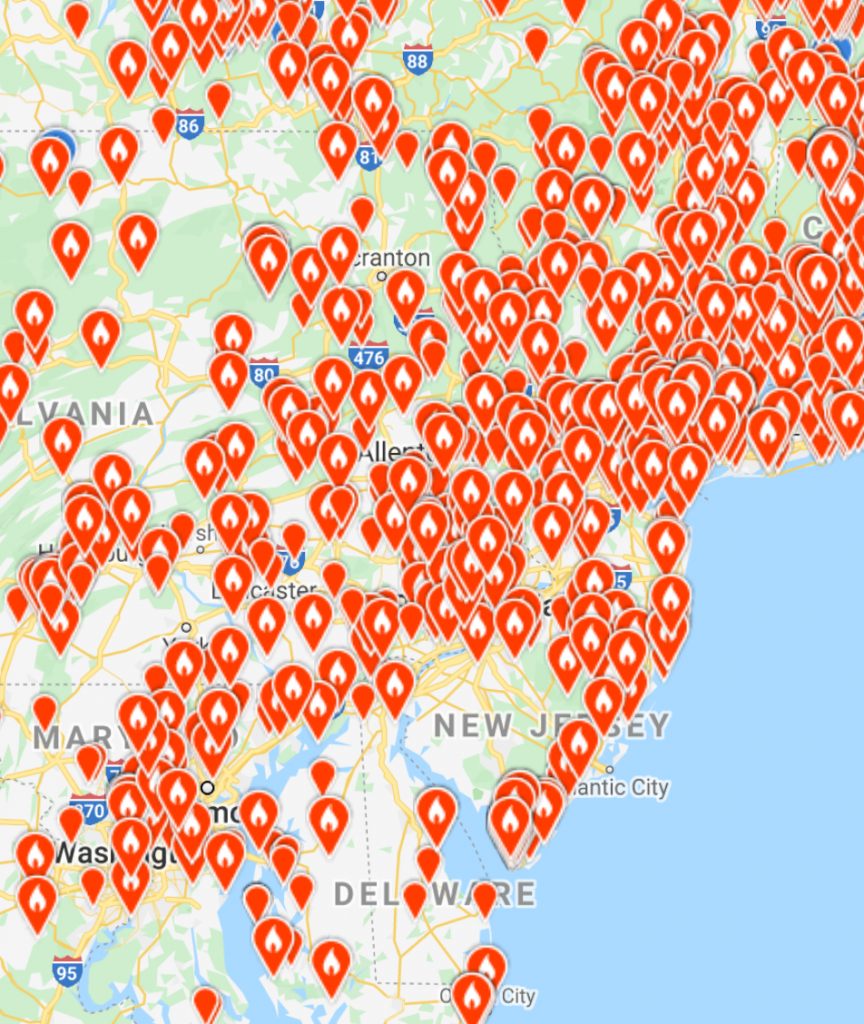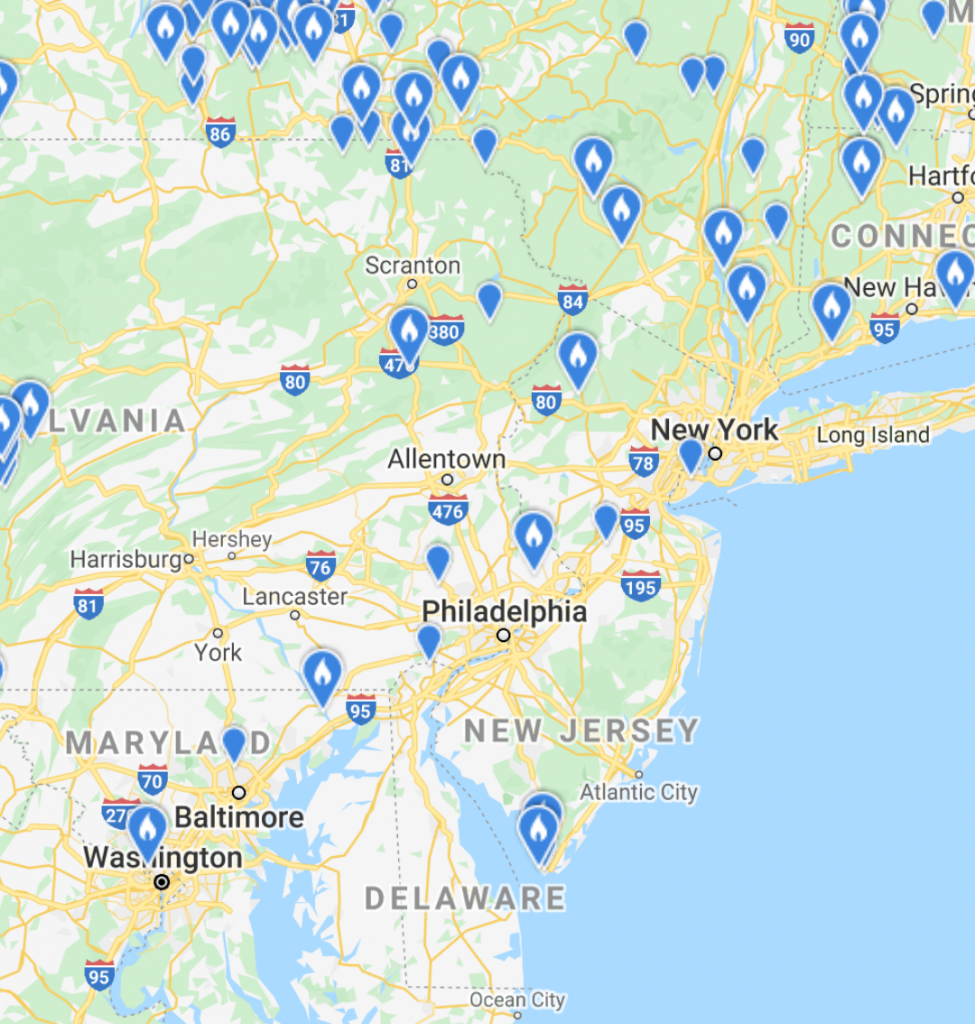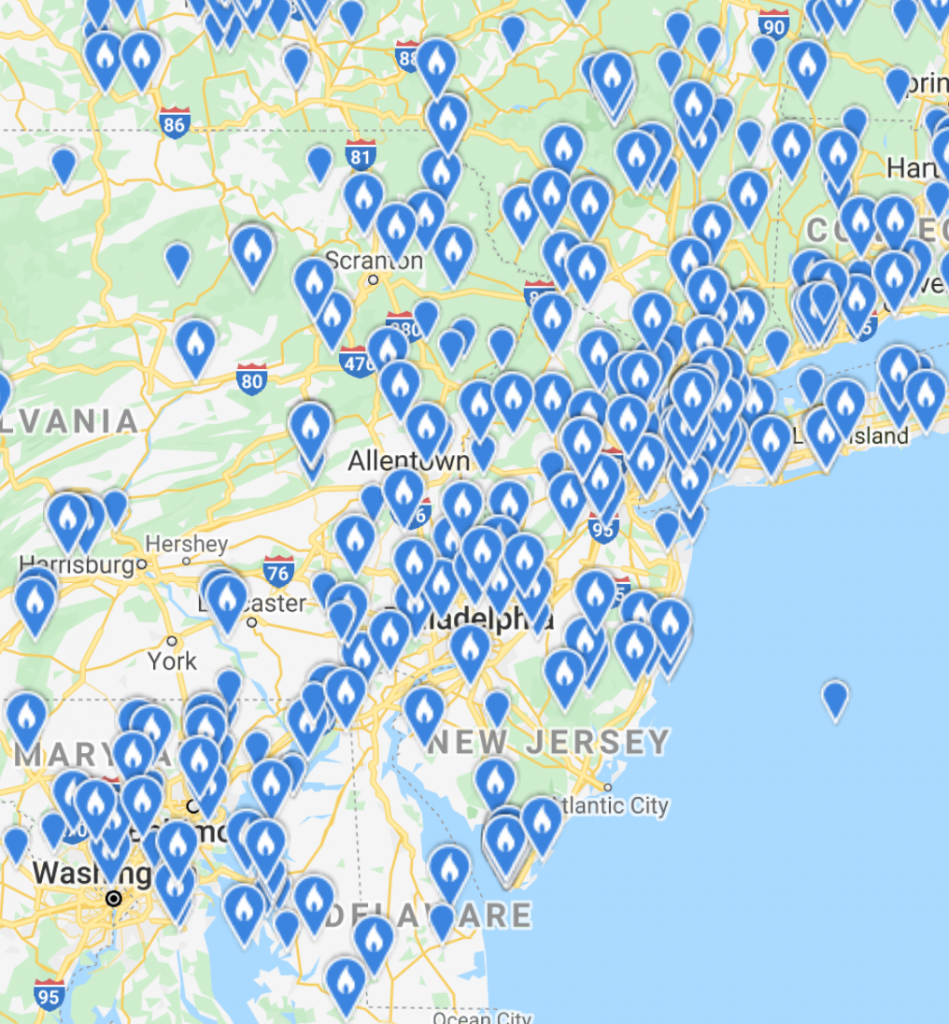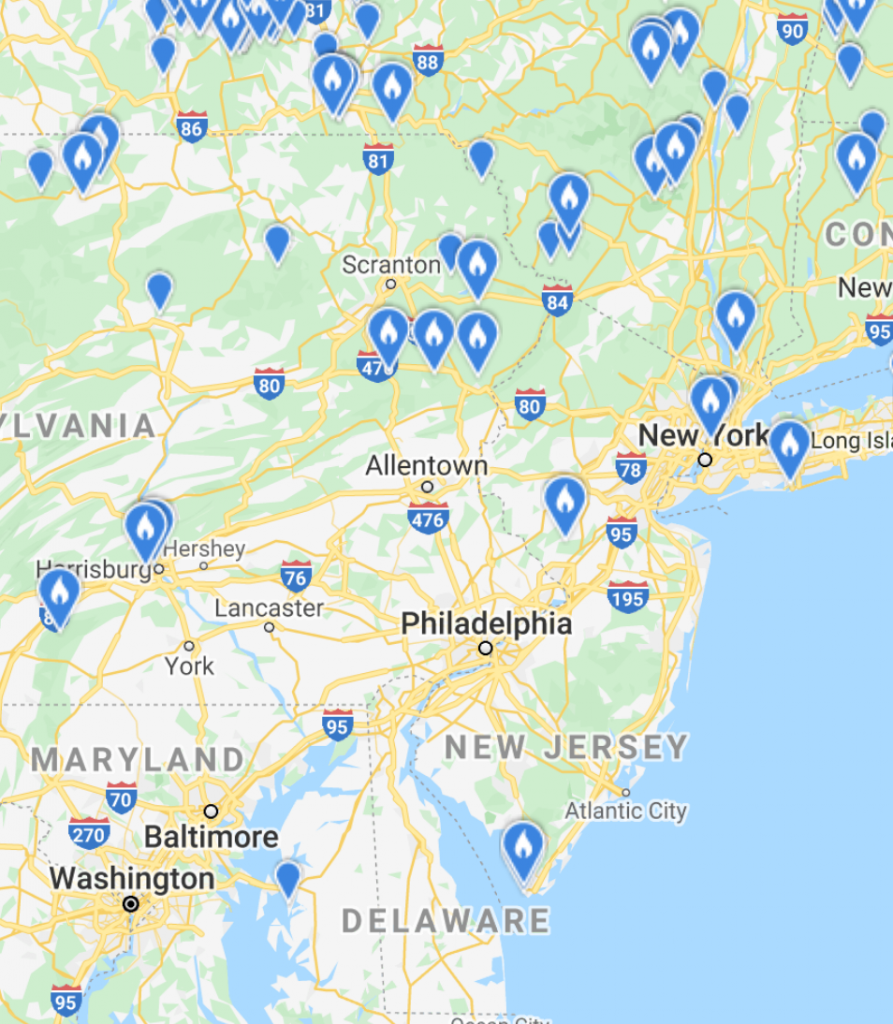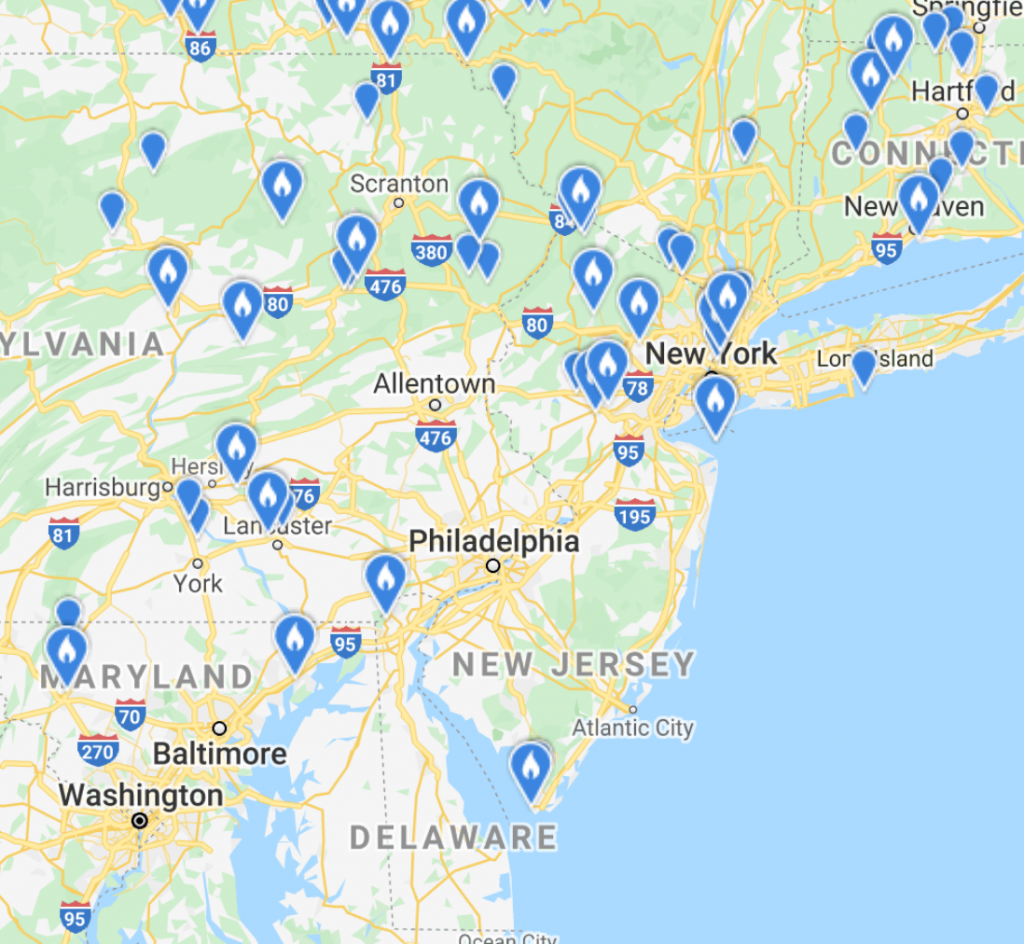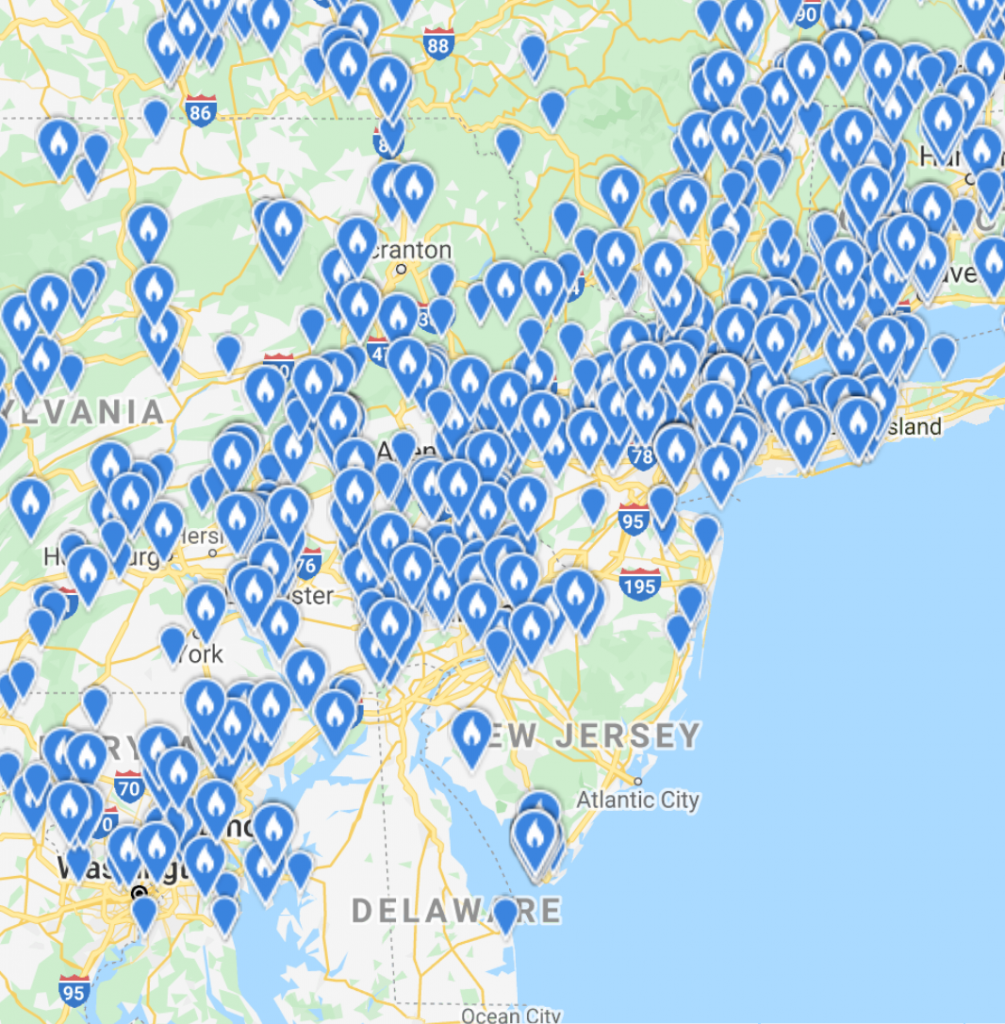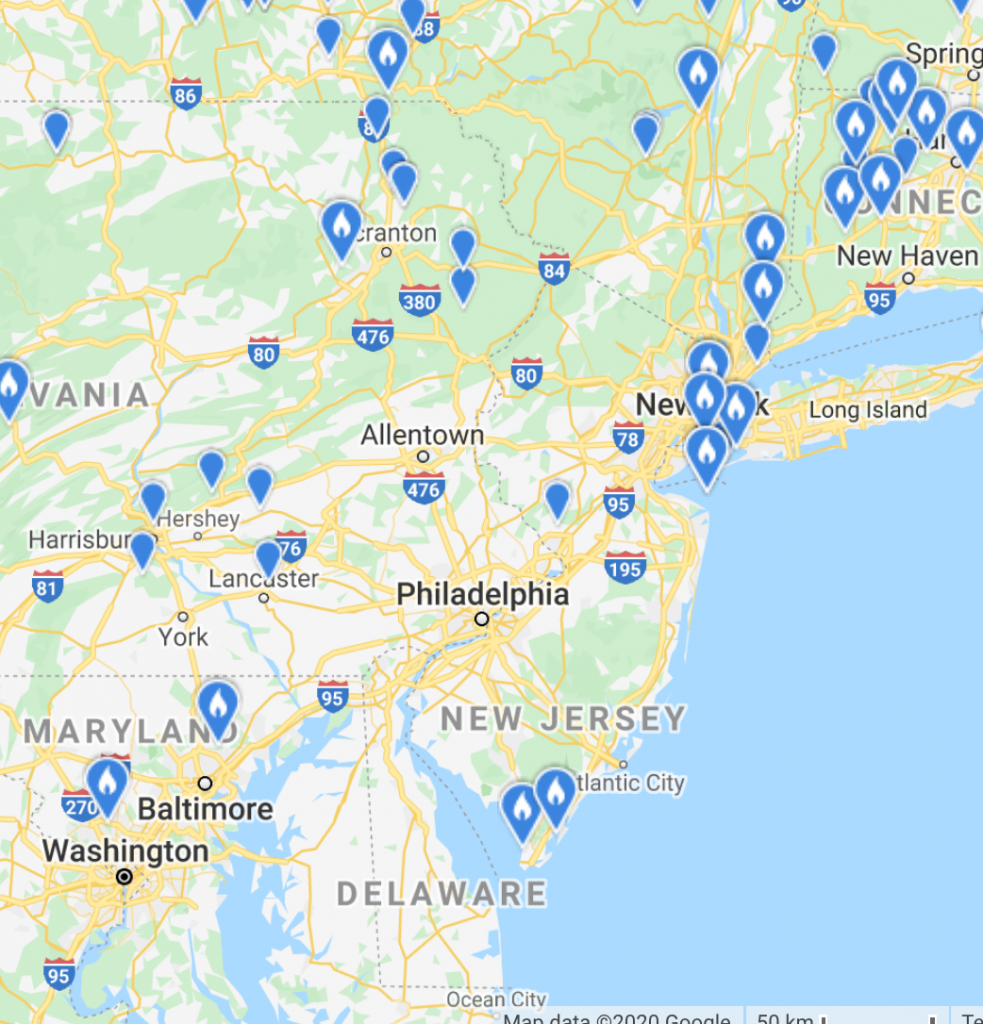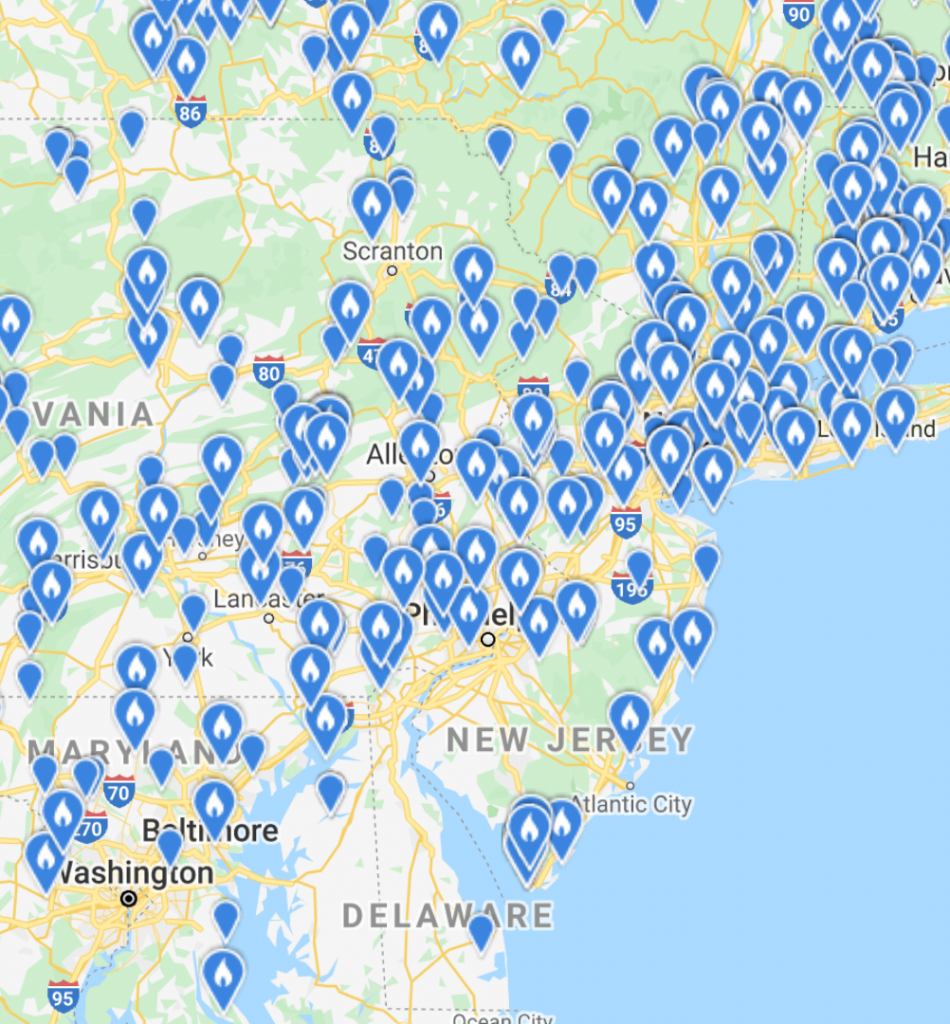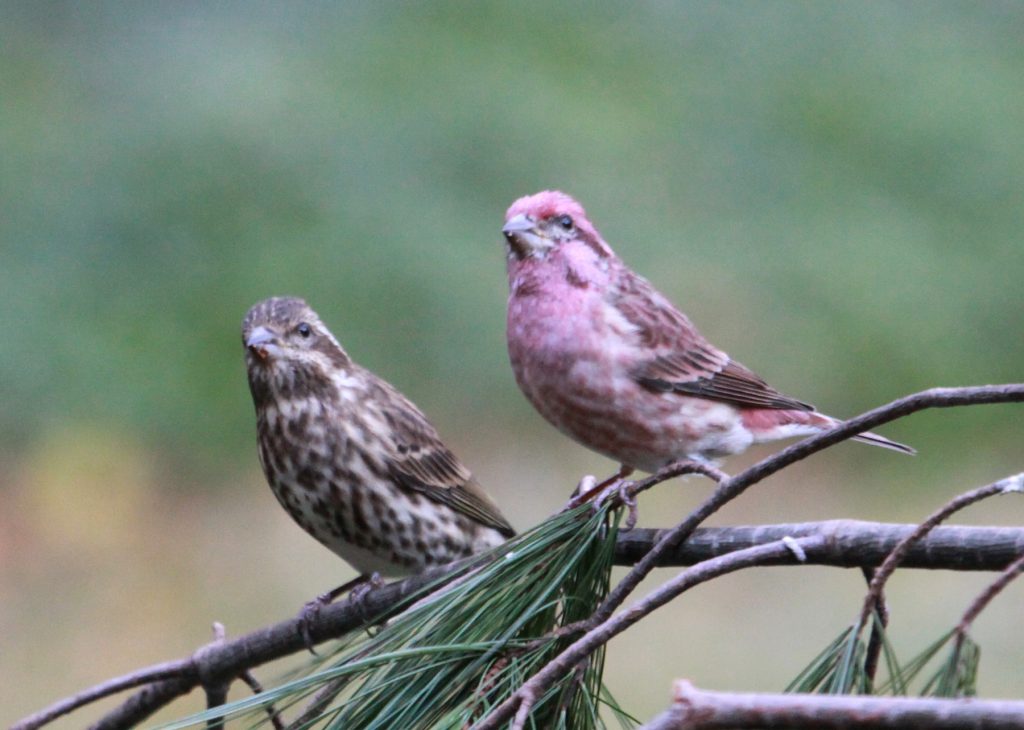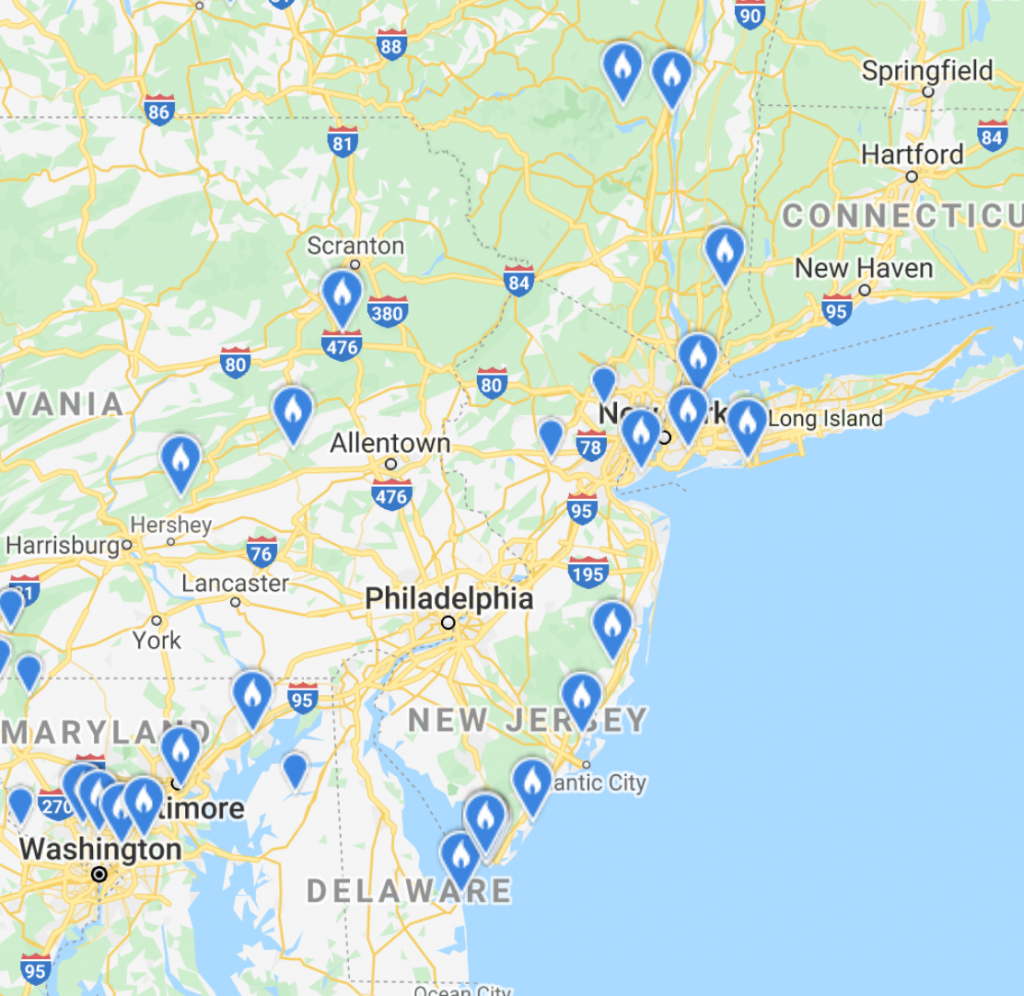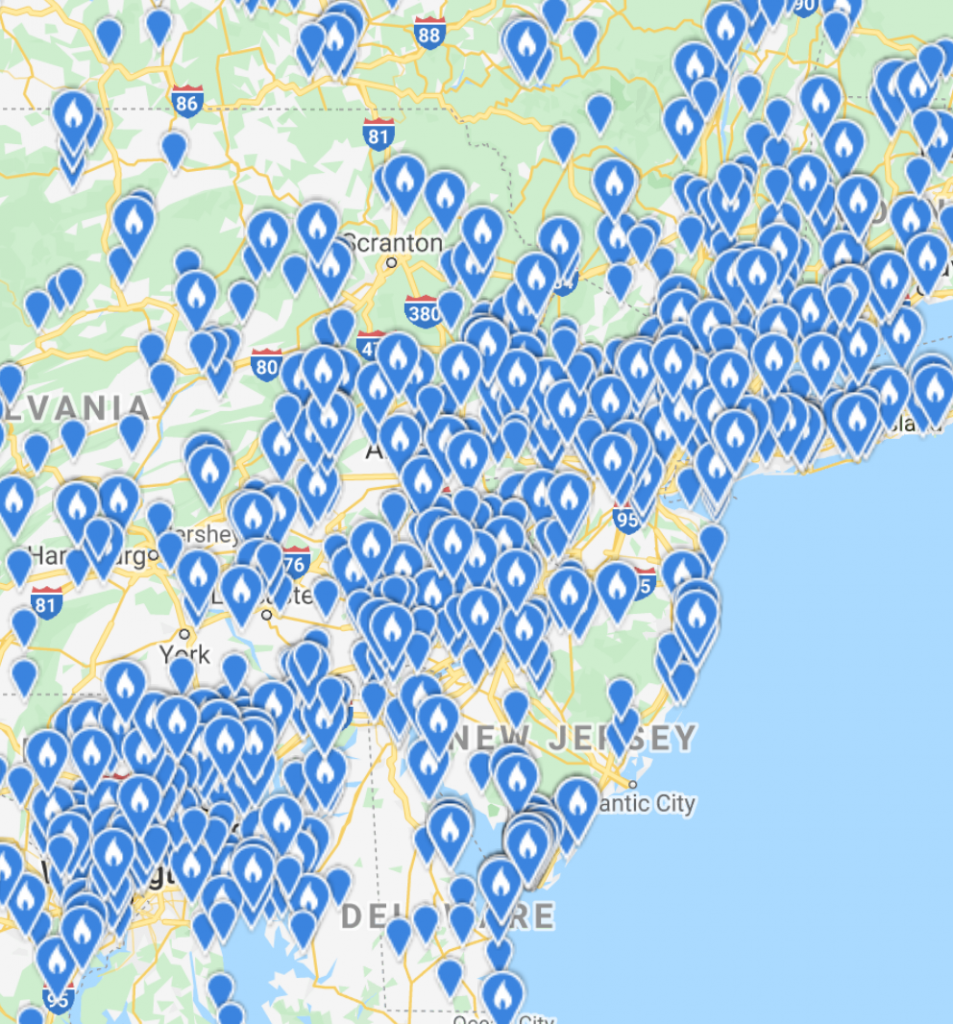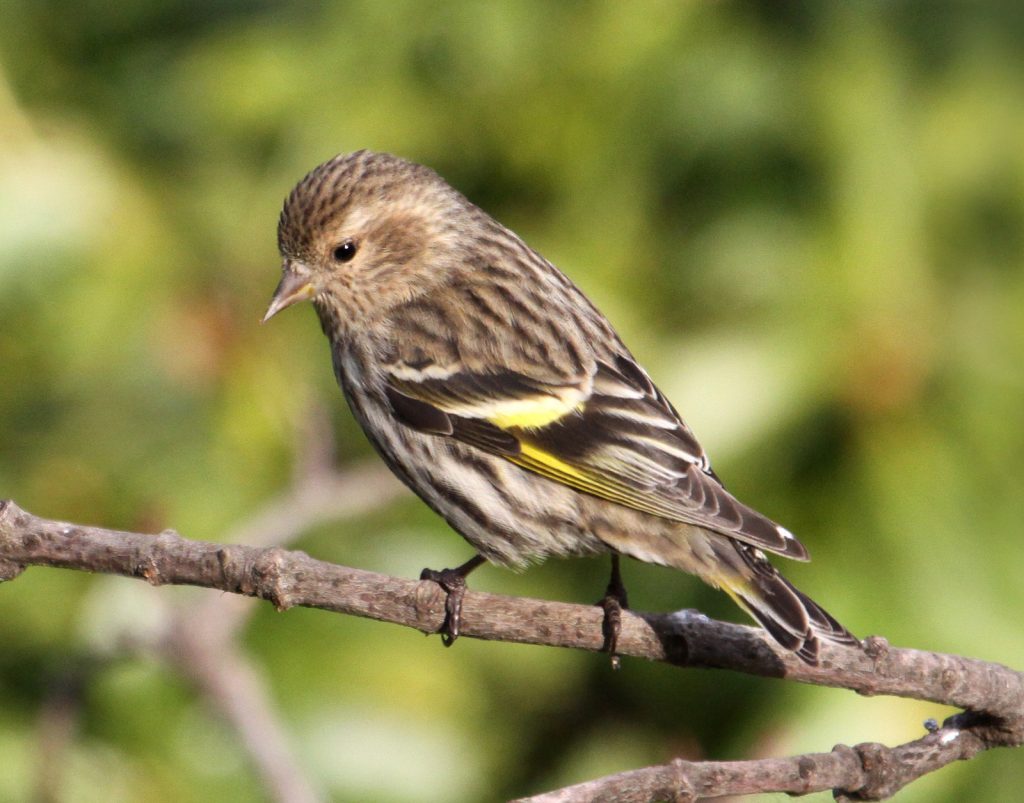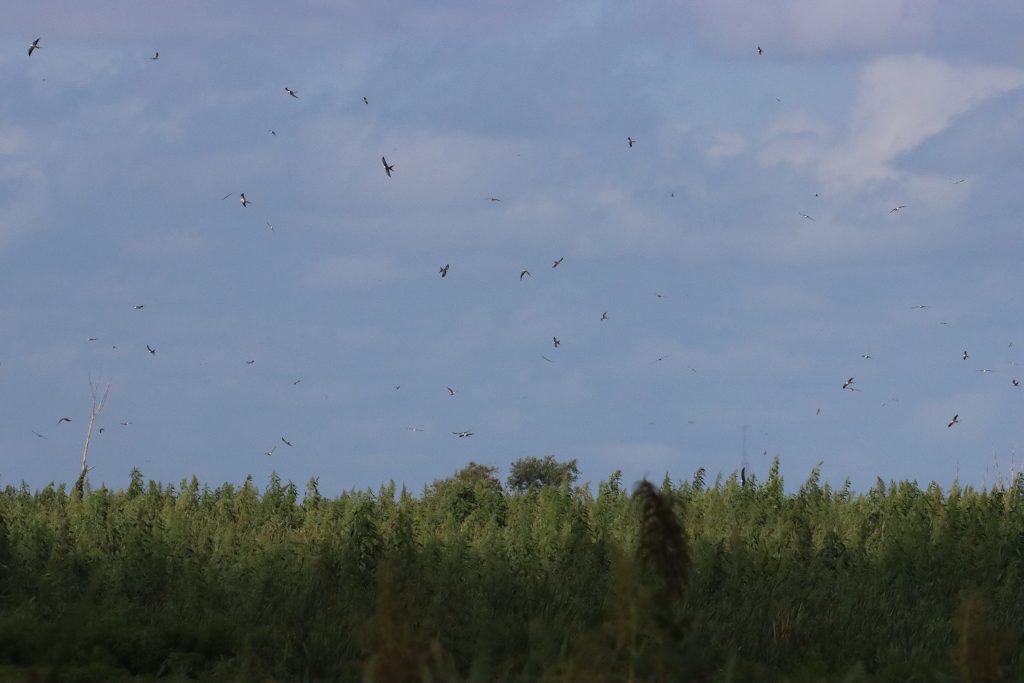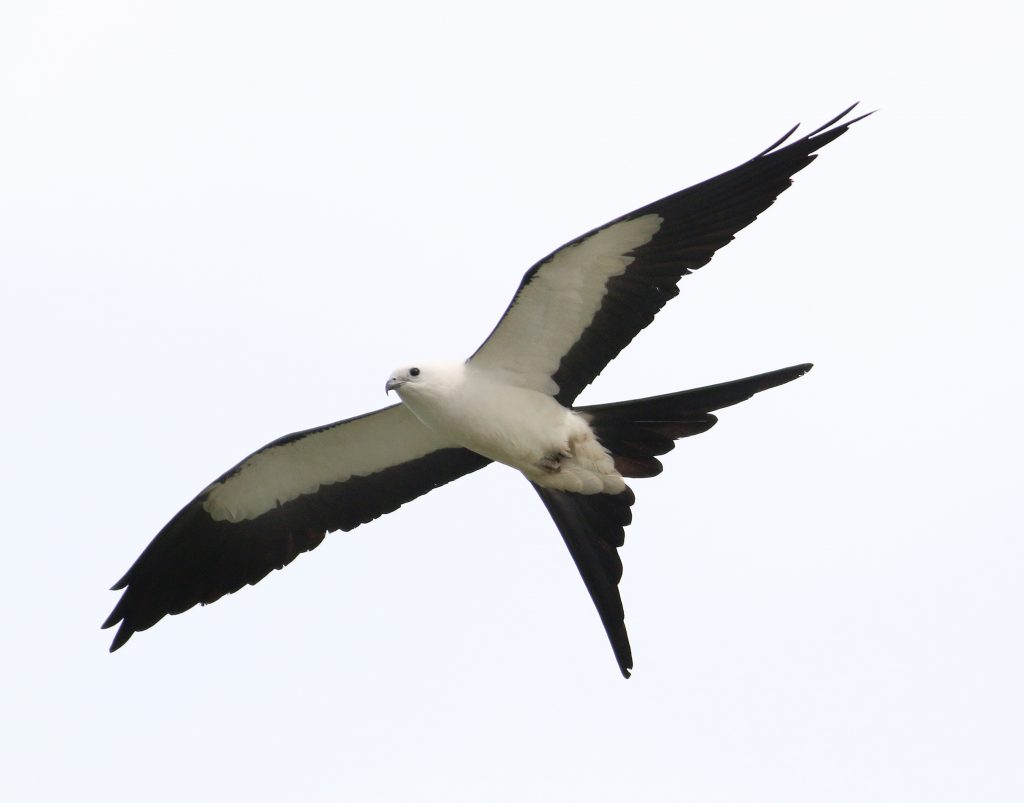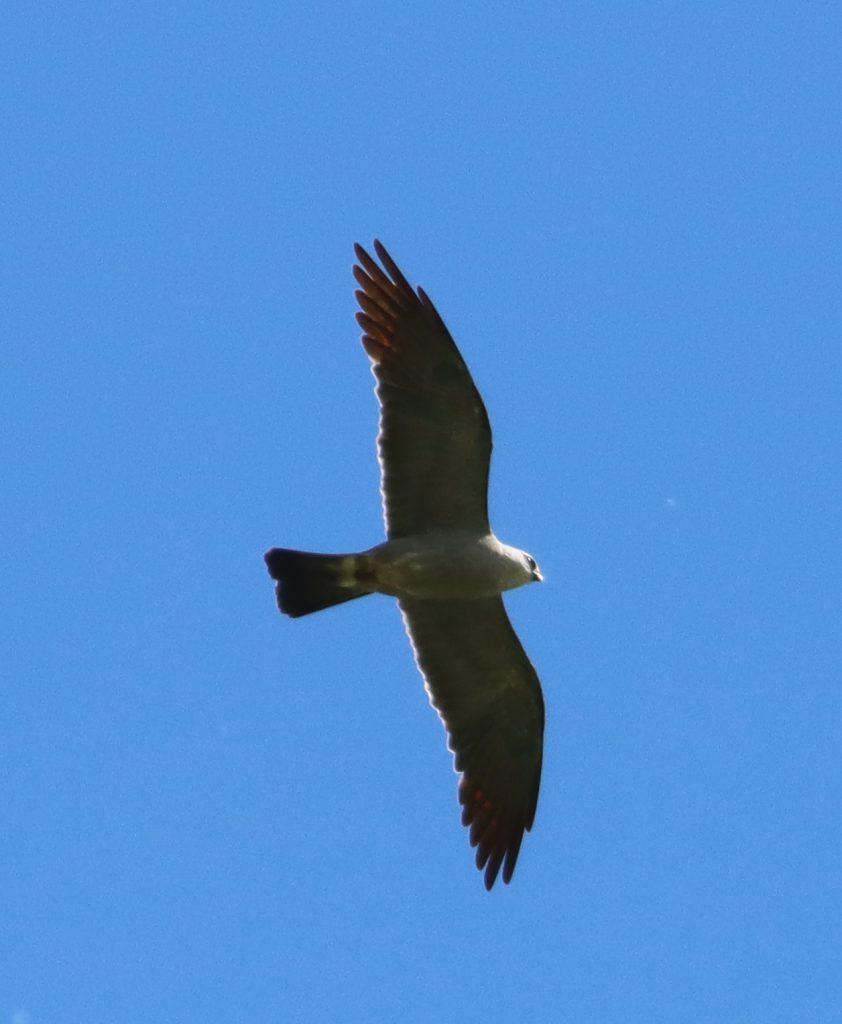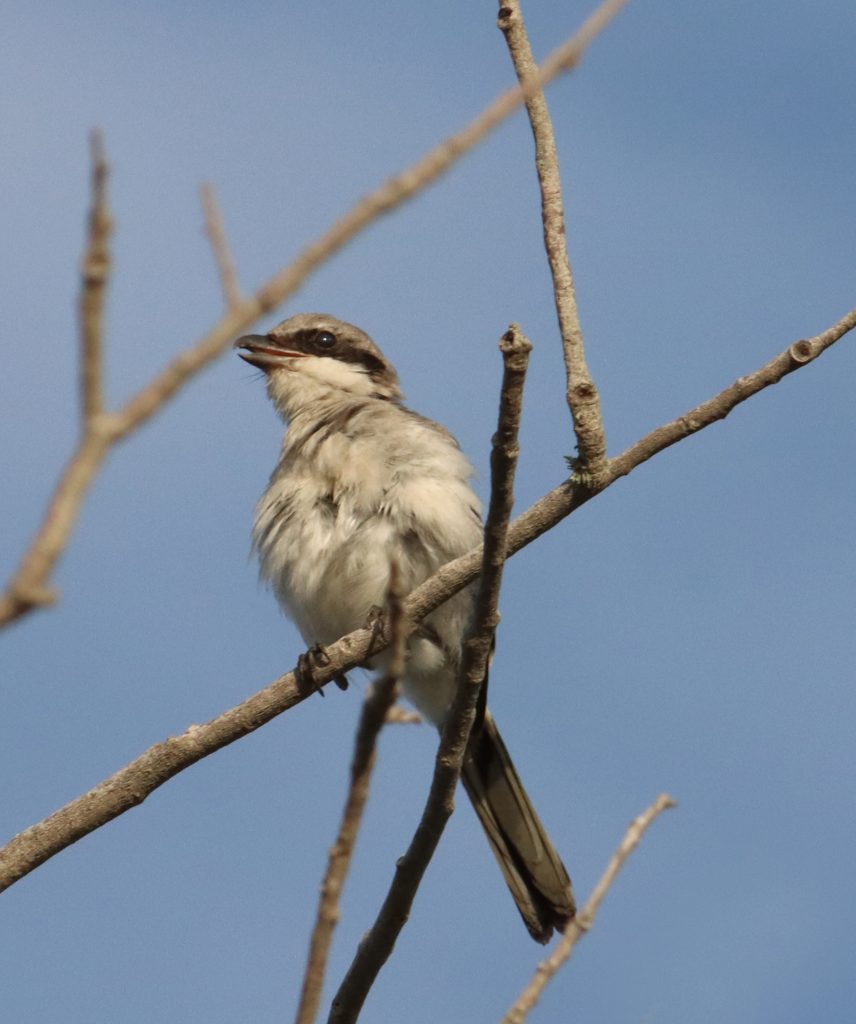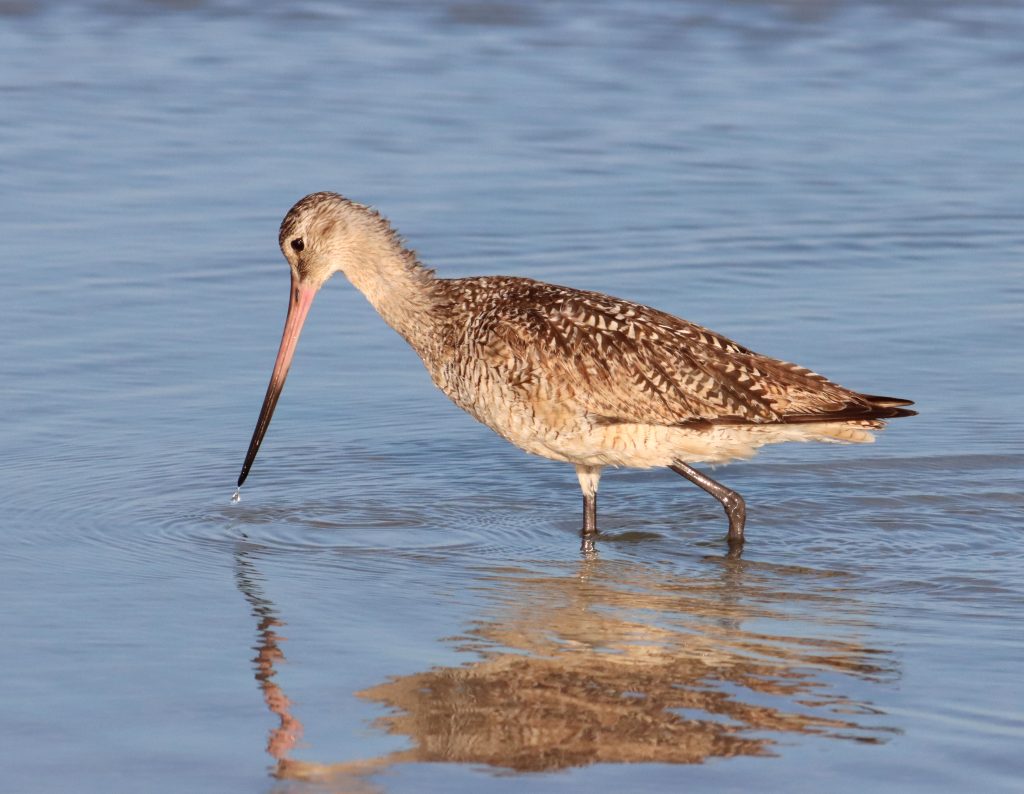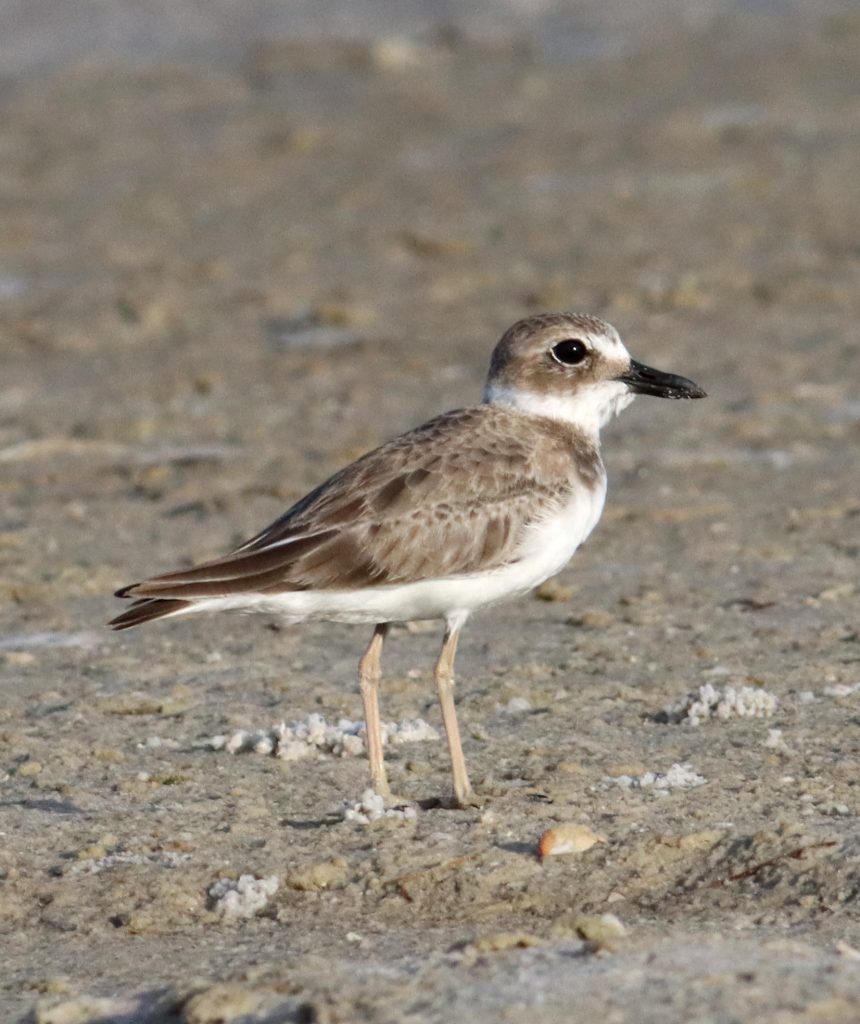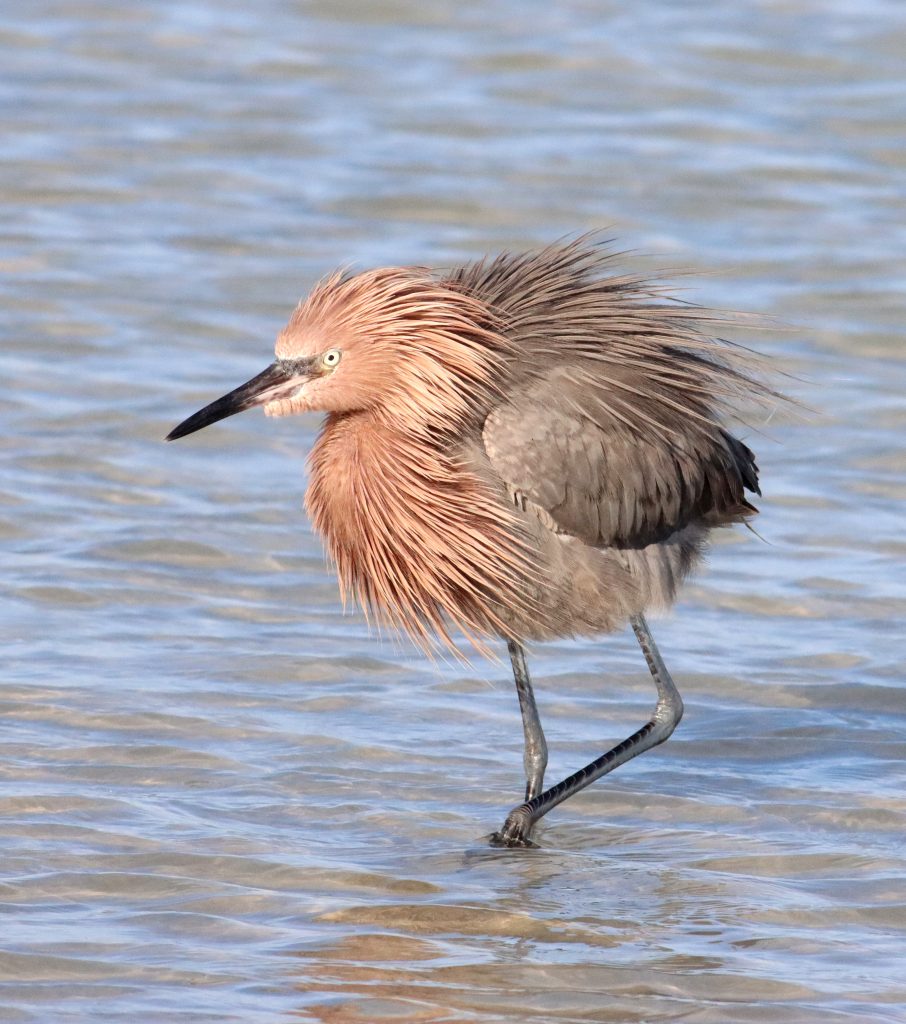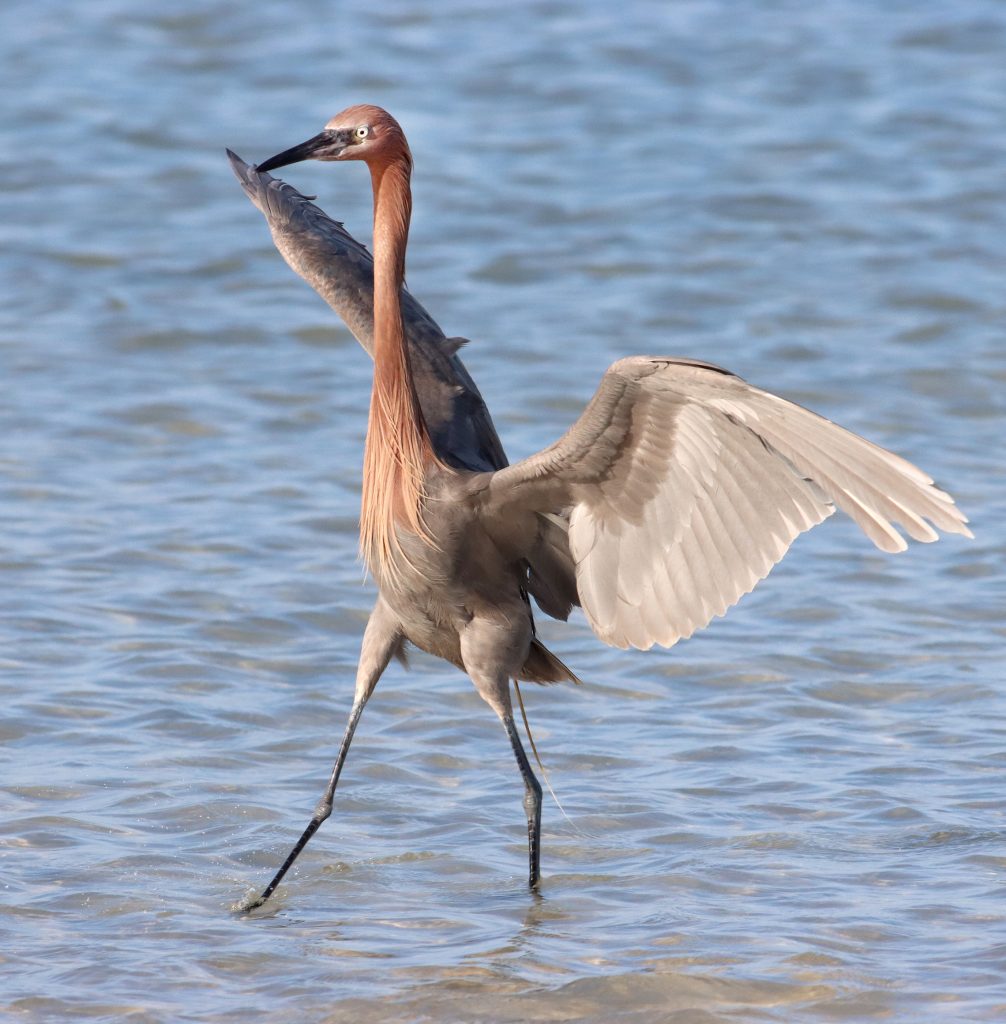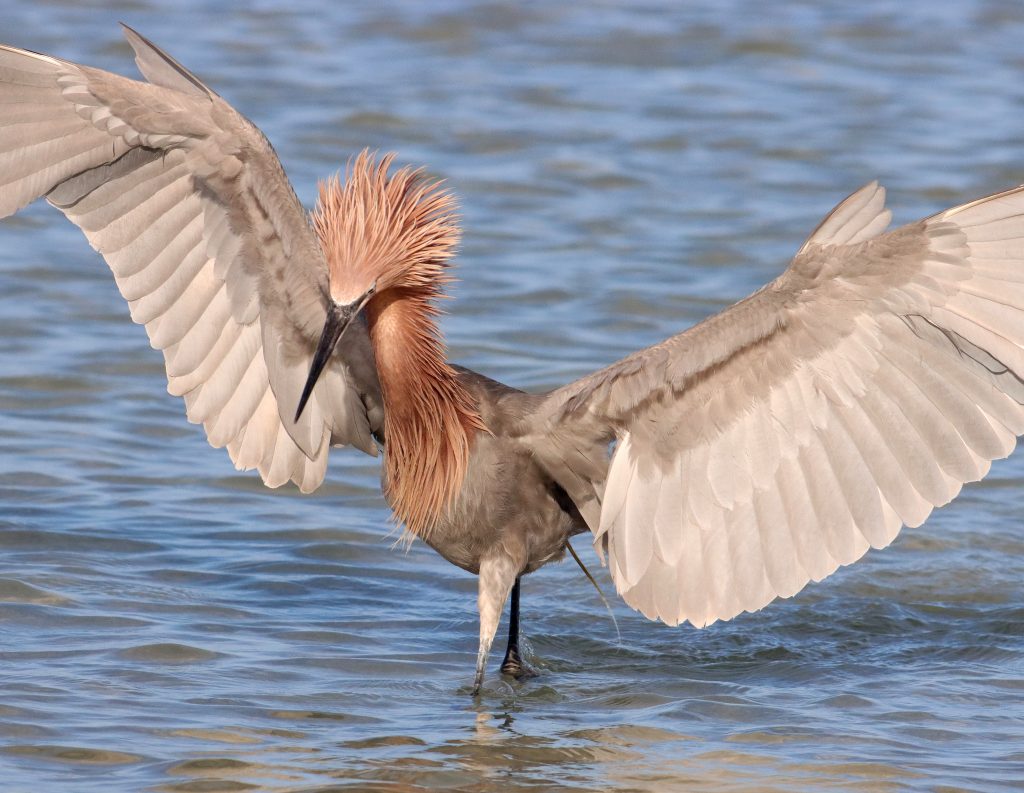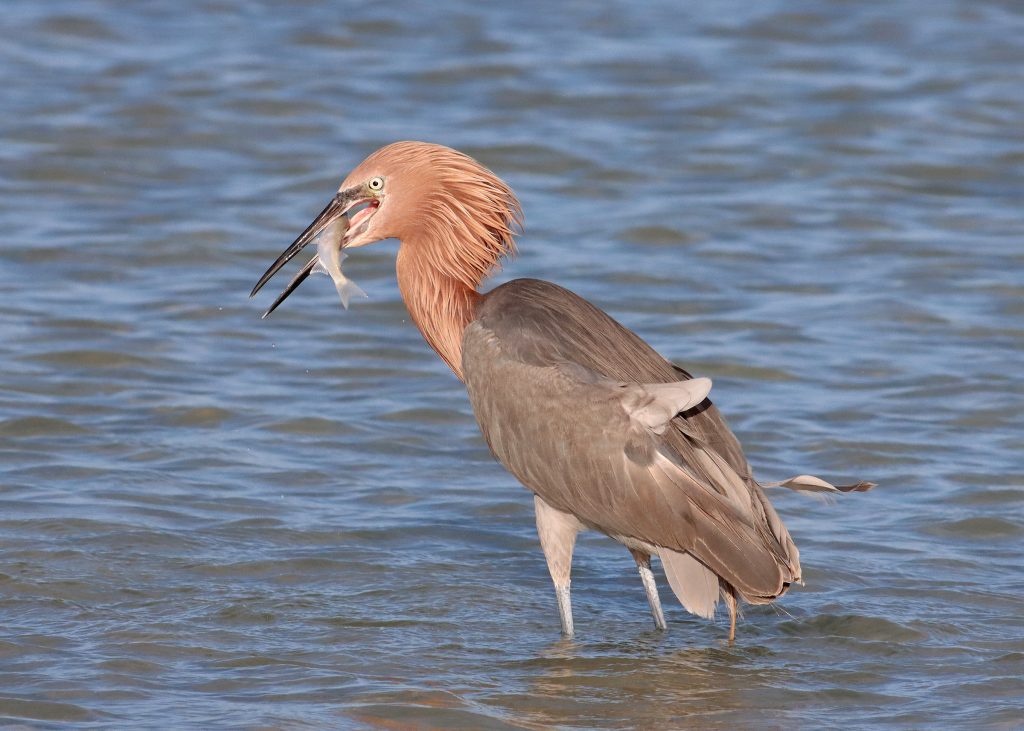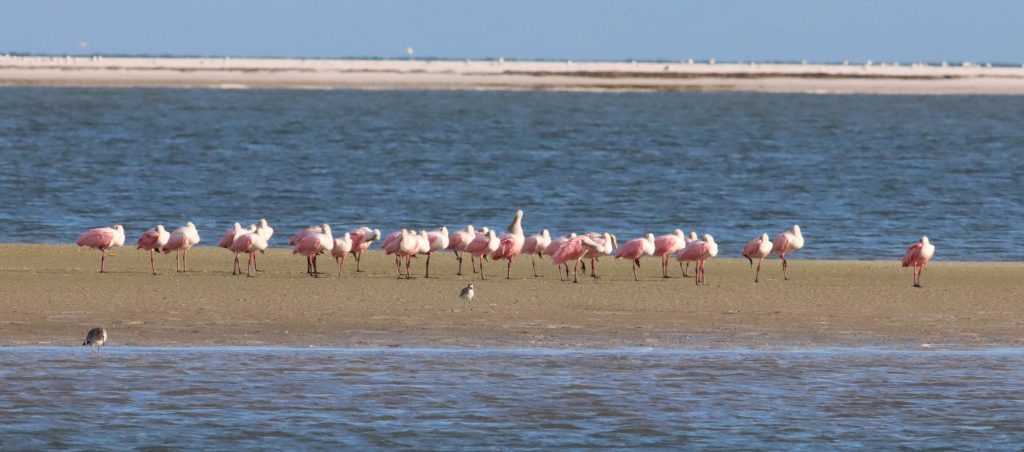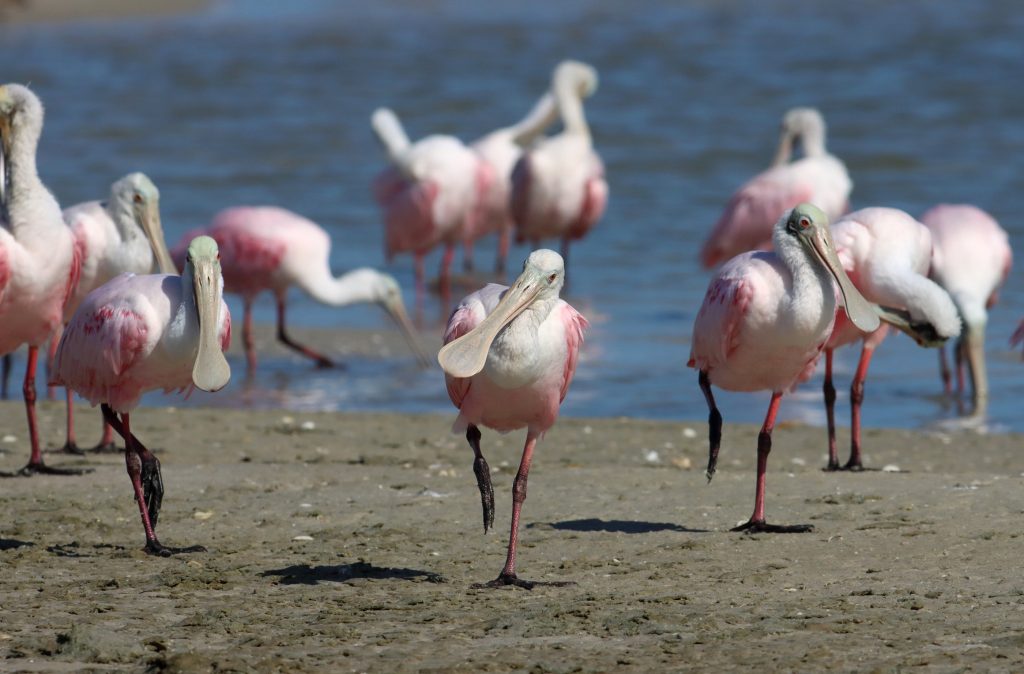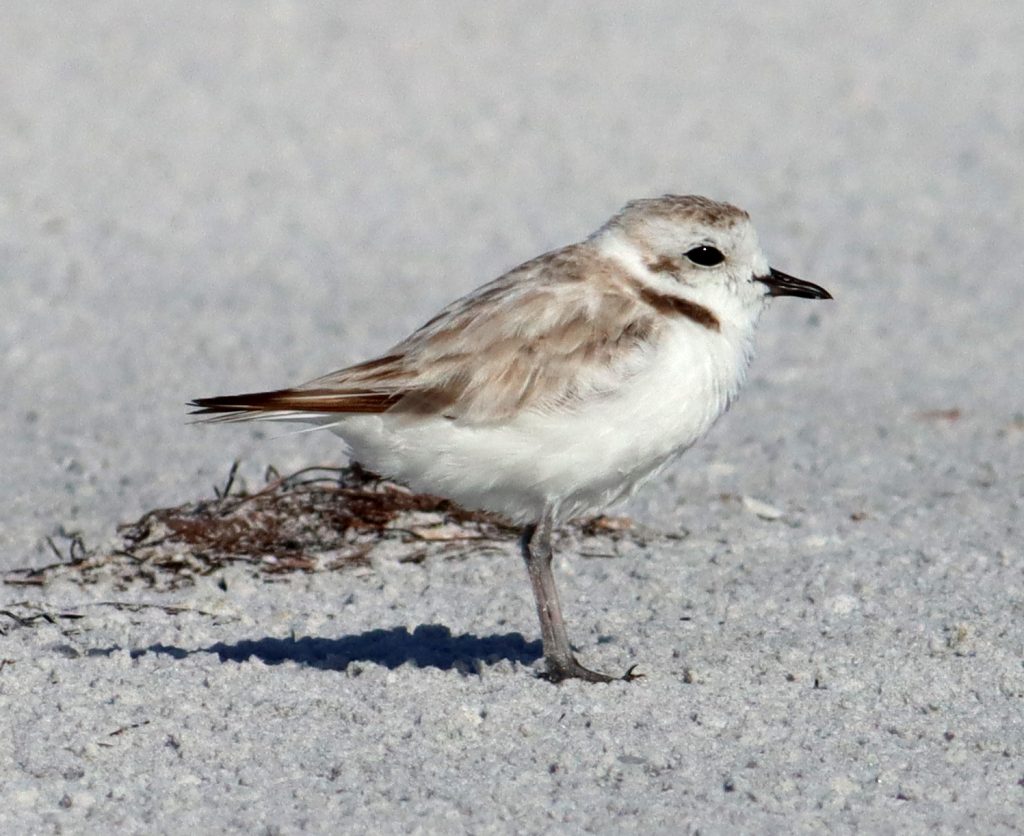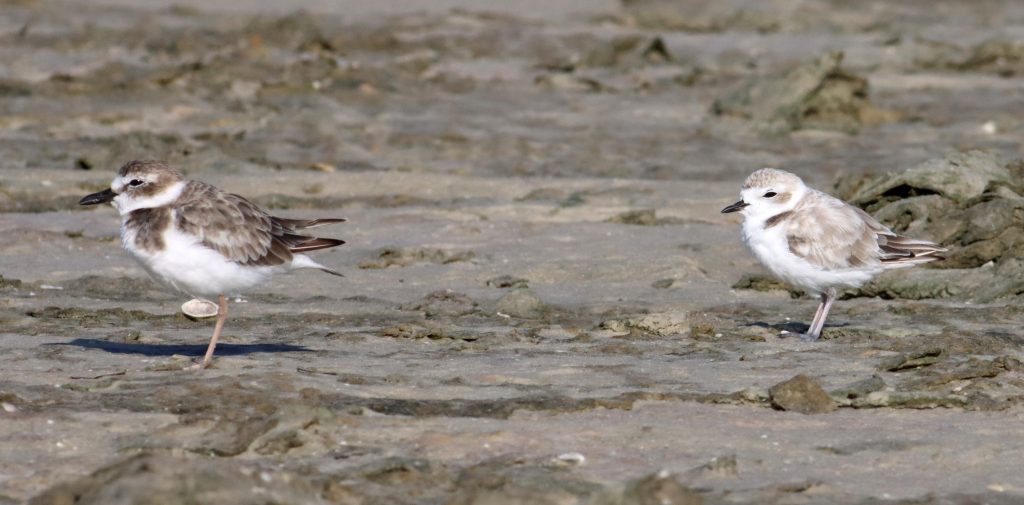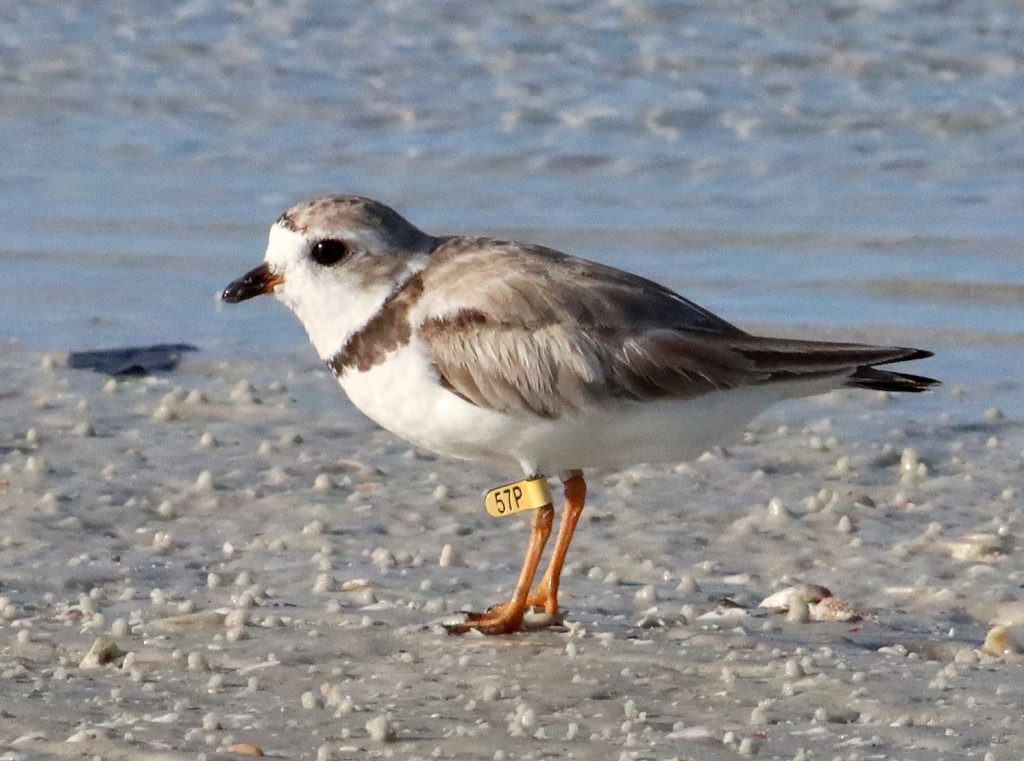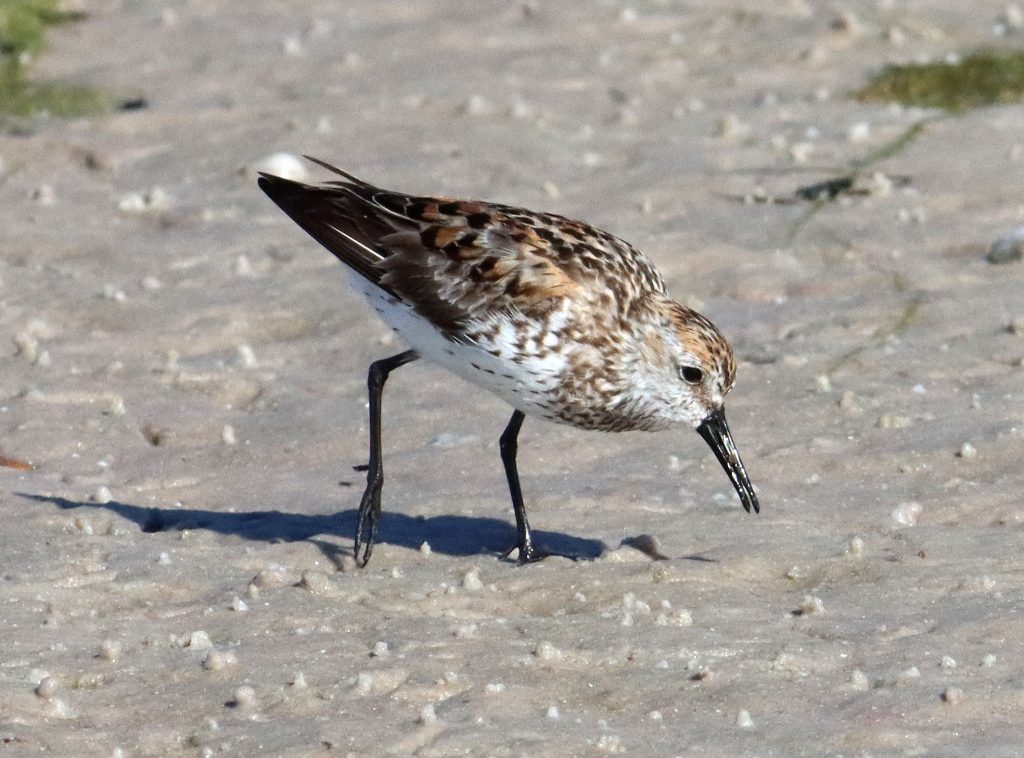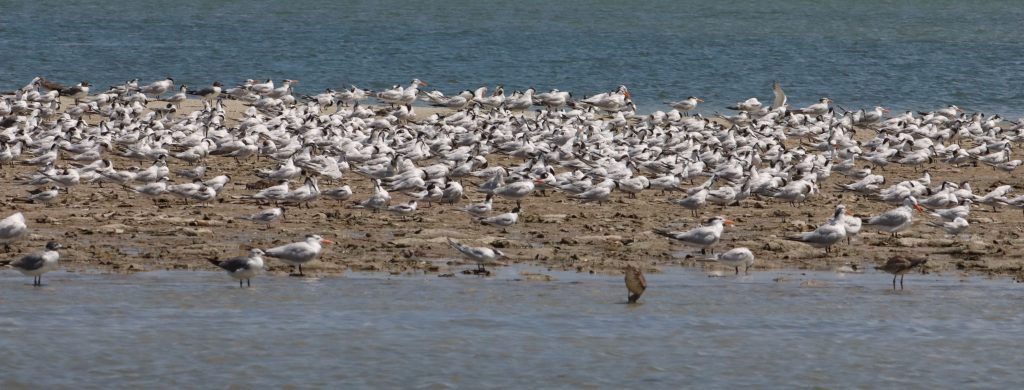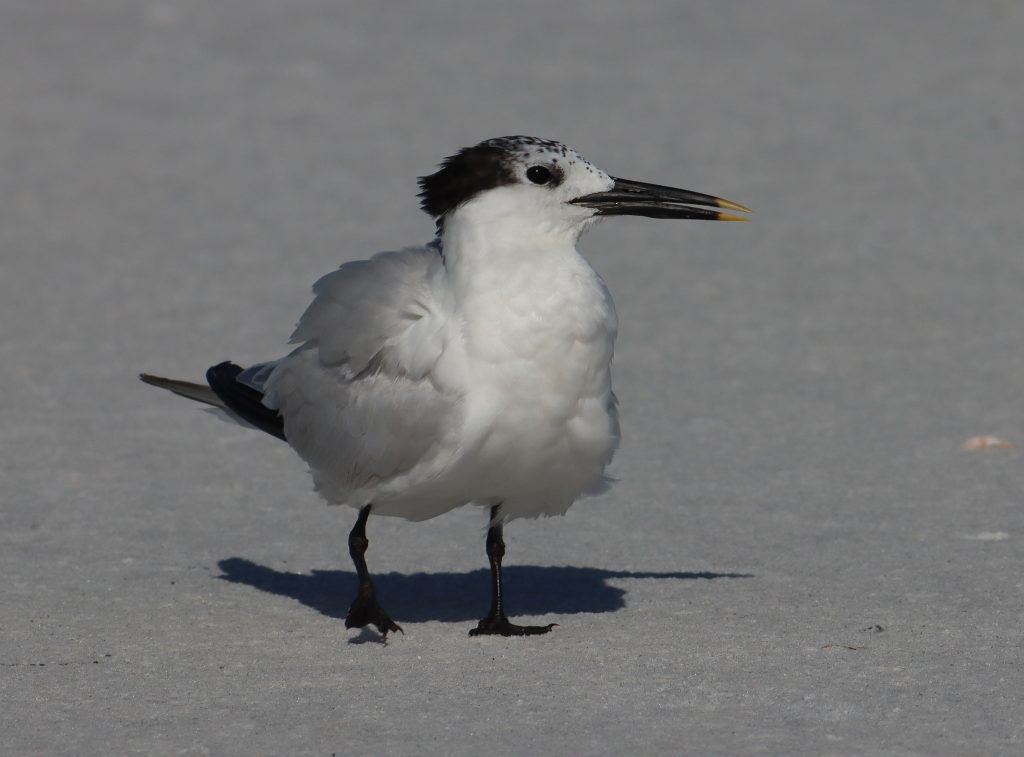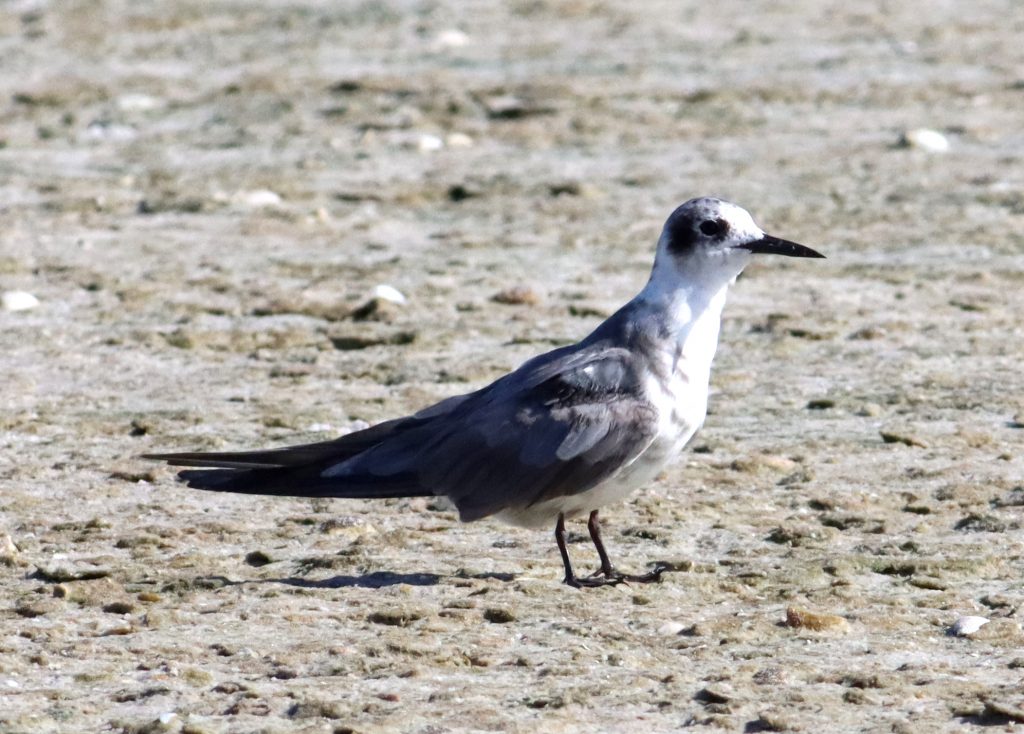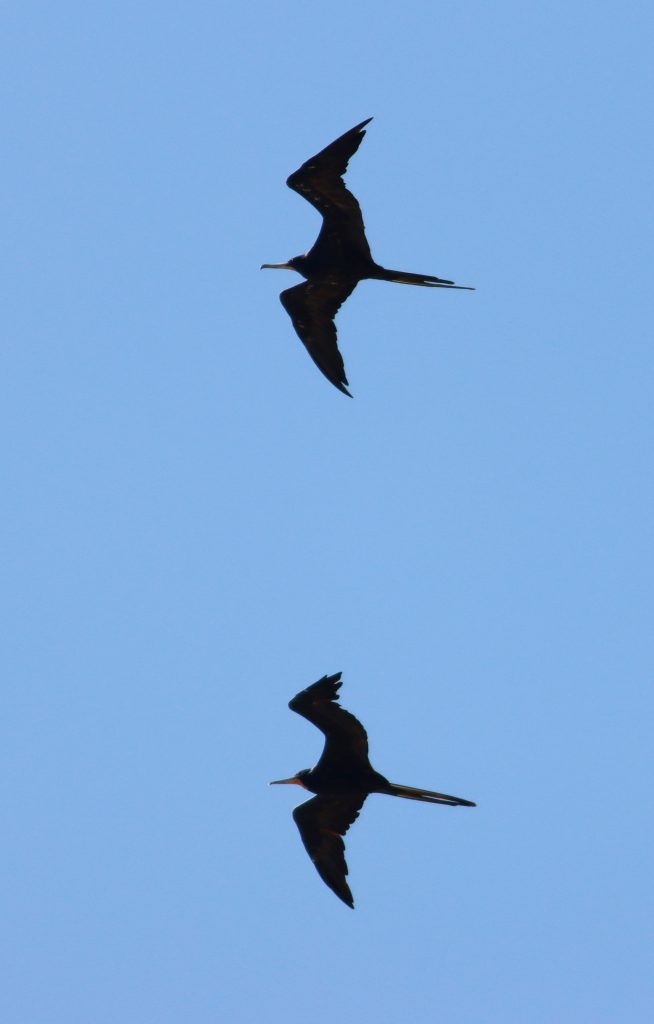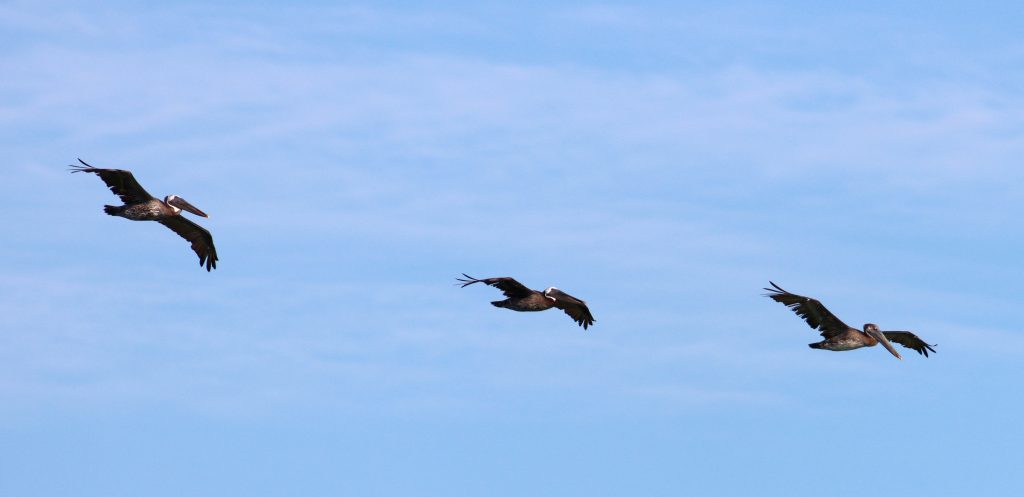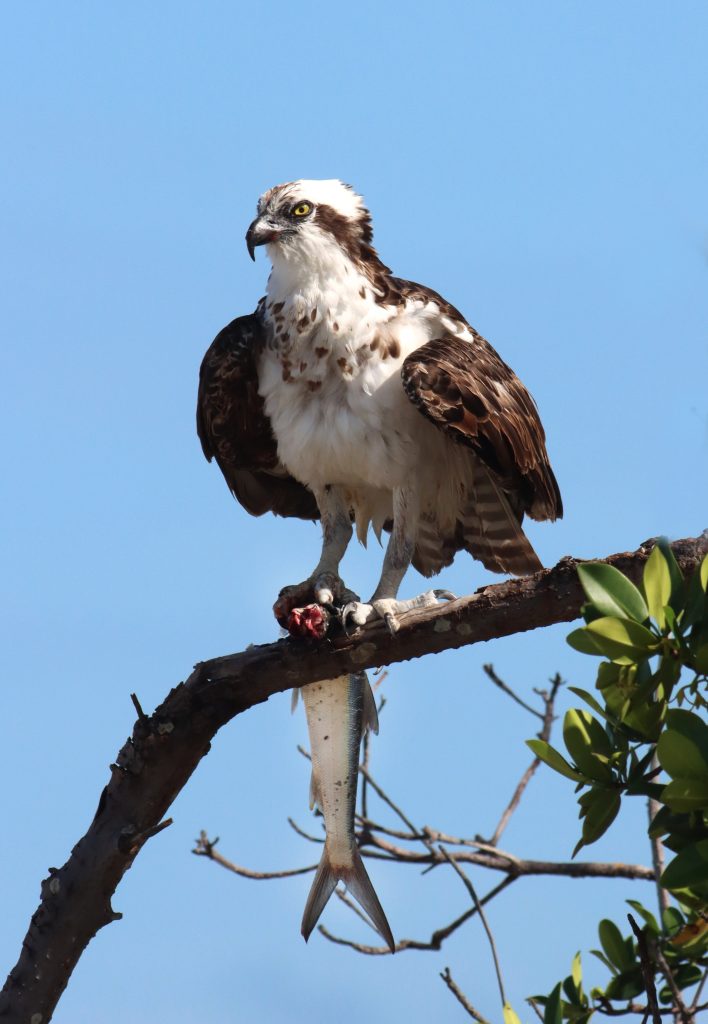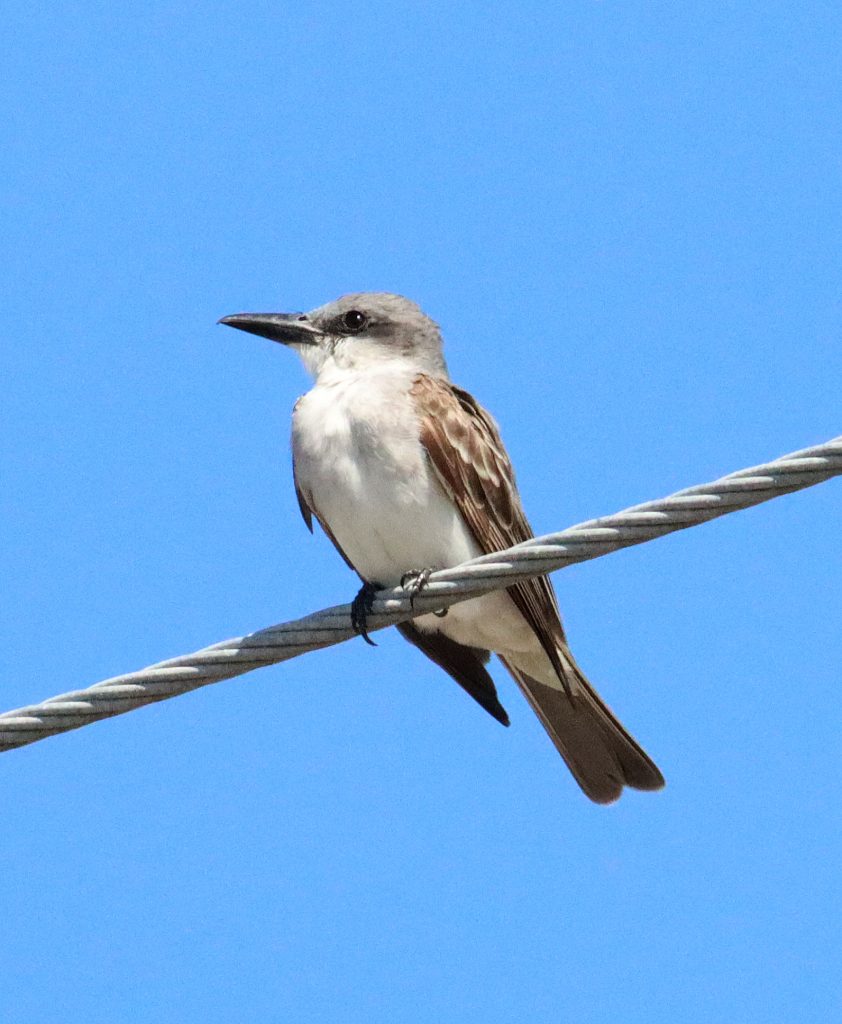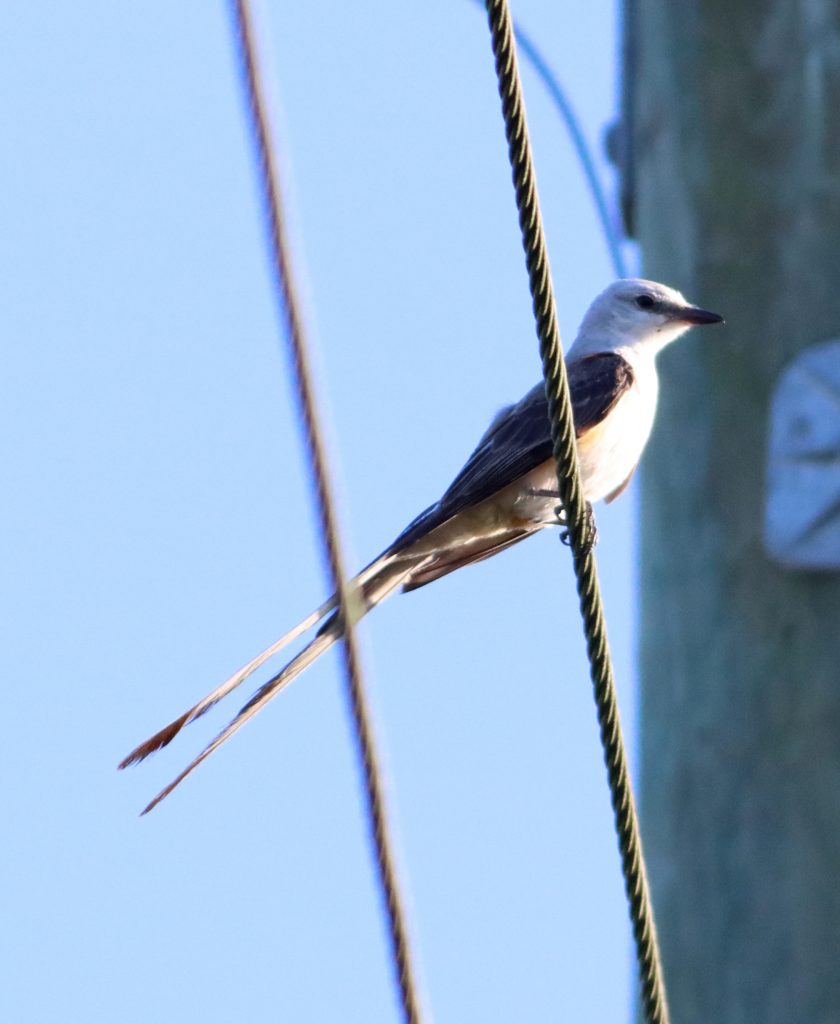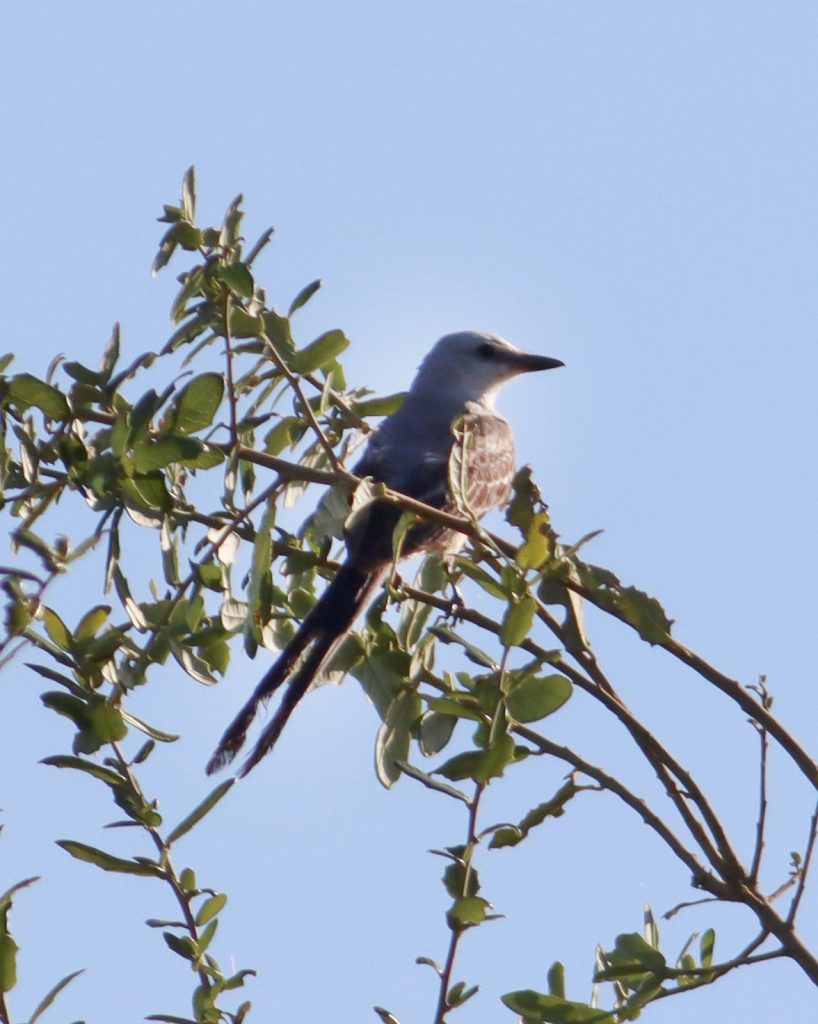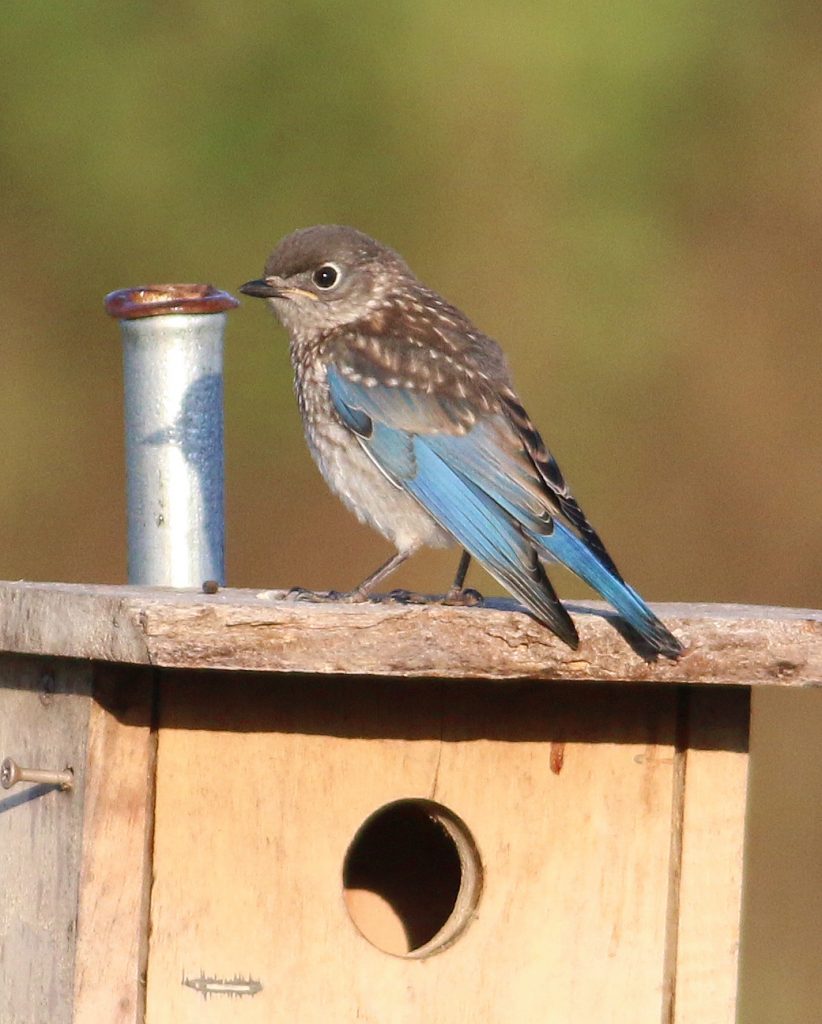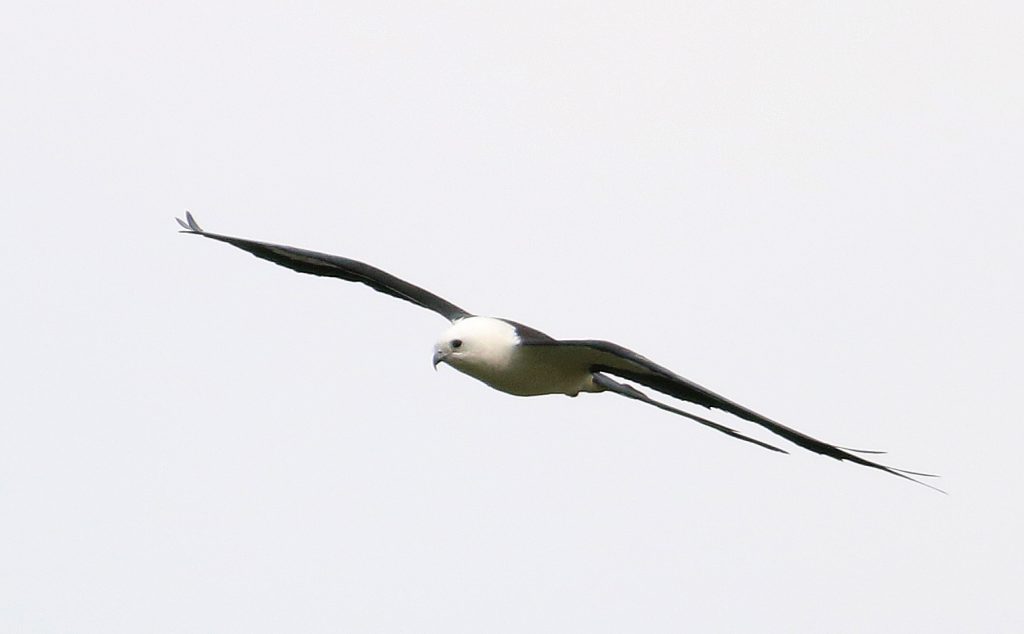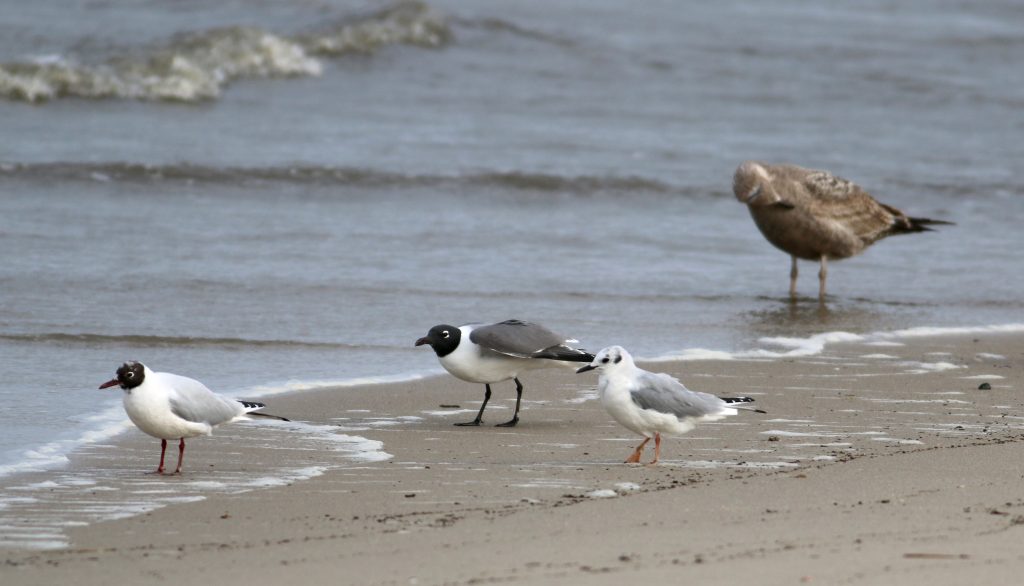This past week we experienced a yearly birding rite of passage, transitioning from a nice variety of diverse warbler species early in the week to the late season monotonous swarm of Yellow-rumped Warblers that signals the approaching end of warbler season. For those who are somewhat overwhelmed by trying to identify fall warblers, with their variety of identification marks to observe (facial patterns, presence or absence of wing bars, body and head color, undertail color, tail length, bill size, behaviors, etc. etc. etc.), it is easy to get lured into thinking that if you see a bird with a yellow rump, then it must be a Yellow-rumped Warbler, right? Wrong. (editor’s note: when “Yellow-rumped Warbler” is capitalized, it means a specific species, Setophaga coronata, but without the capital letters, a “yellow-rumped warbler” could be any warbler with a yellow rump. Got it? Capitalization matters.)
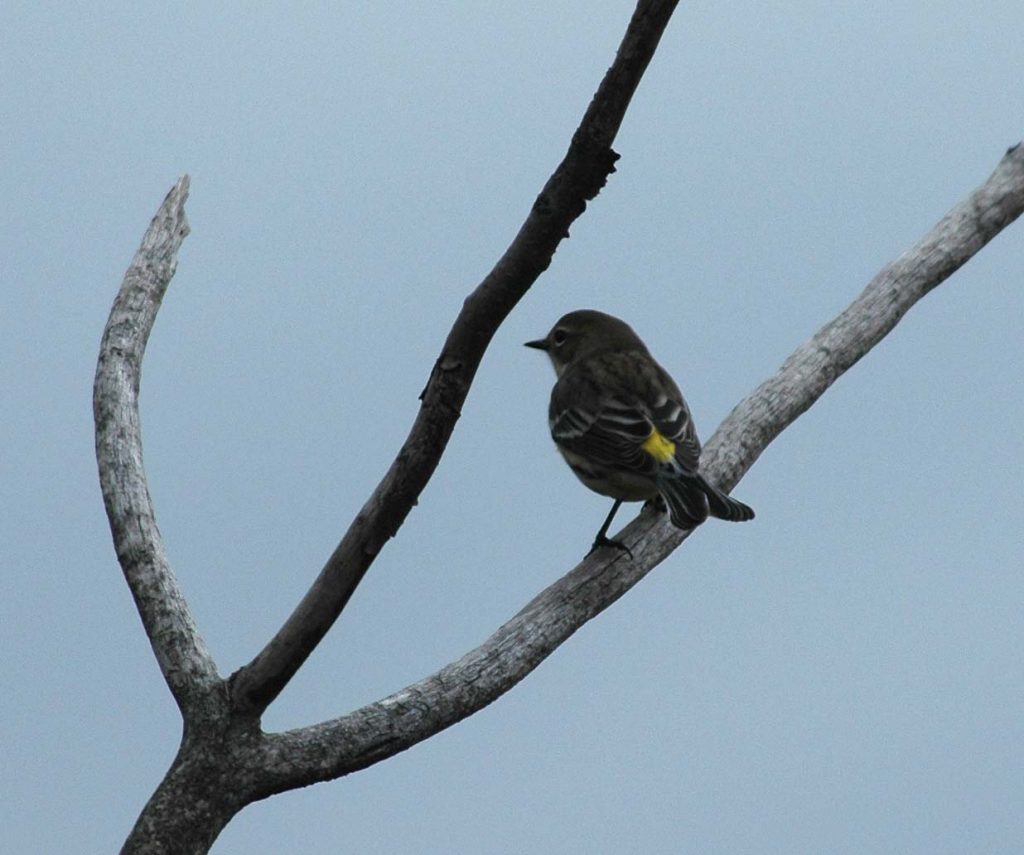
OK, so here we have a fairly distant bird in a tree. But is it a Yellow-rumped Warbler (Setophaga coronata) or a confounding yellow-rumped warbler? Read on.
Let’s start by looking at a classic fall Setophaga coronata Yellow-rumped Warbler and make sure we can identify it first, and then proceed onward to the confounding species.
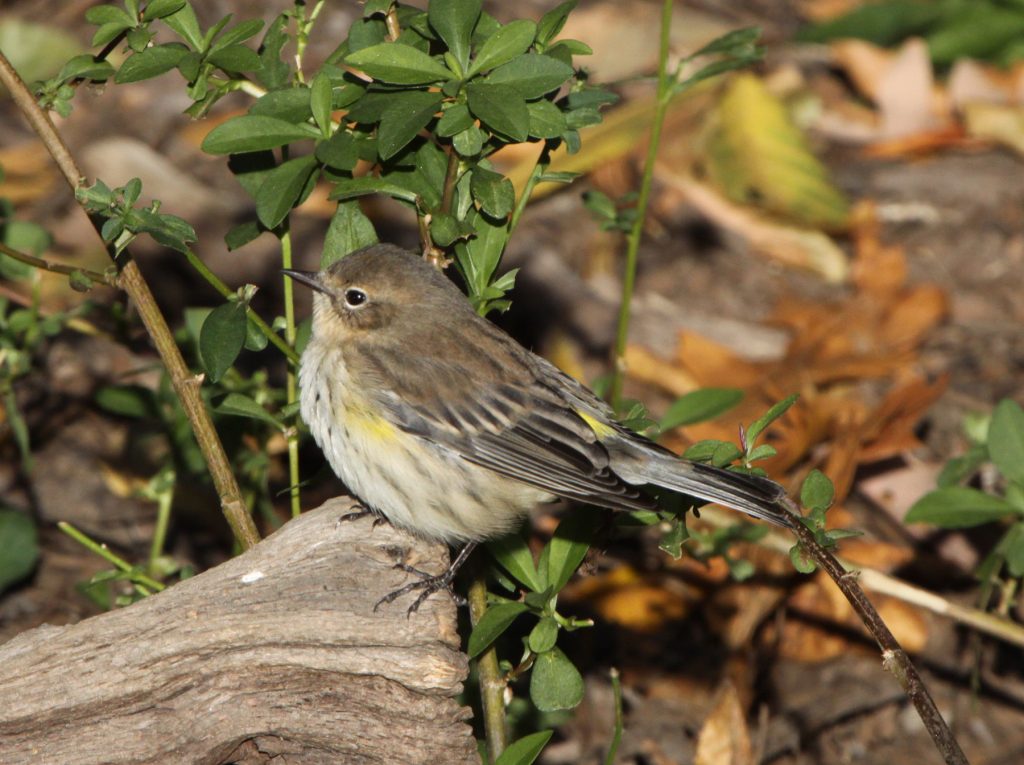
A classic fall Yellow-rumped Warbler, featuring dark but thin and diffuse streaks overlaid on a light gray breast, with small yellow patches on the side, a patchy brownish face and the namesake yellow rump. Unlike most warblers, they are often found in groups.
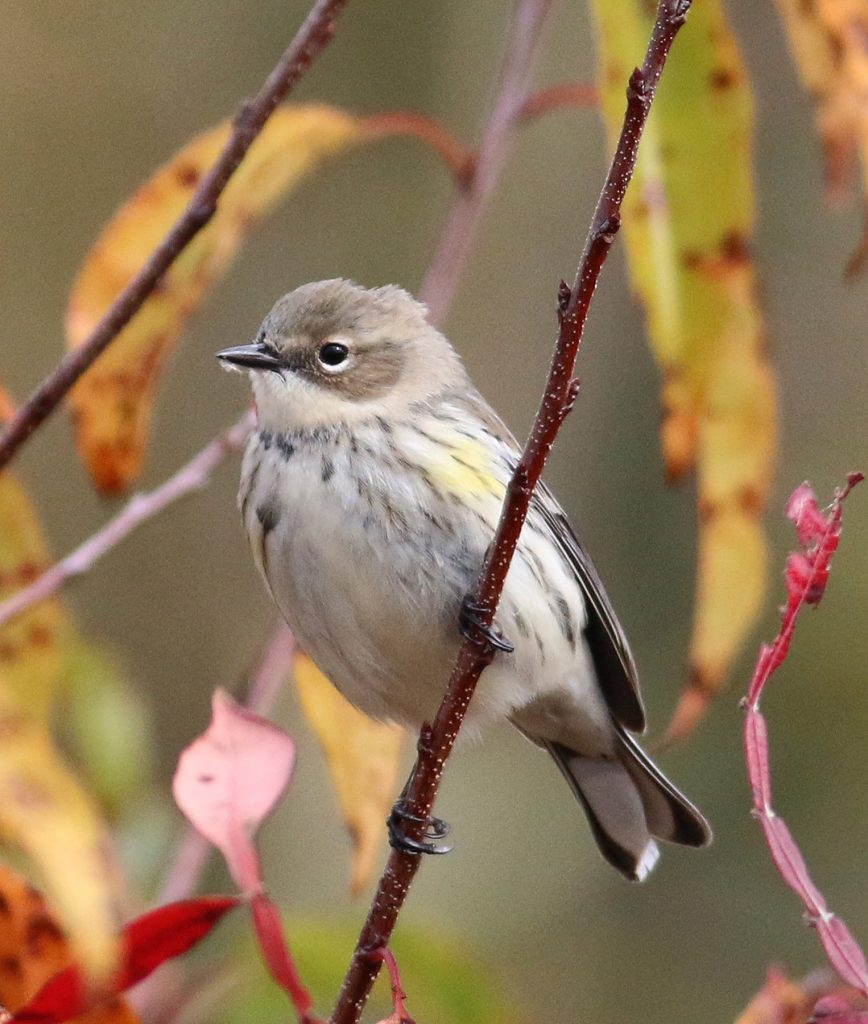
Frontal view of a classic fall Yellow-rumped Warbler, showing that the breast streaks do not continue completely across the breast.
So what other warblers can have yellow rumps? We will ignore the species that are yellow nearly all over, such as Yellow Warbler, Hooded Warbler, and Wilson’s Warbler, since the most important thing is having a yellow rump that contrasts with the rest of the body. After all, it is not merely the presence of a yellow rump that gives the Yellow-rumped Warbler its name, but instead it’s the distinction of the rump from the rest of the body color.
So let’s take a look at a few of those non-Yellow-rumped Warblers that have yellow rumps.
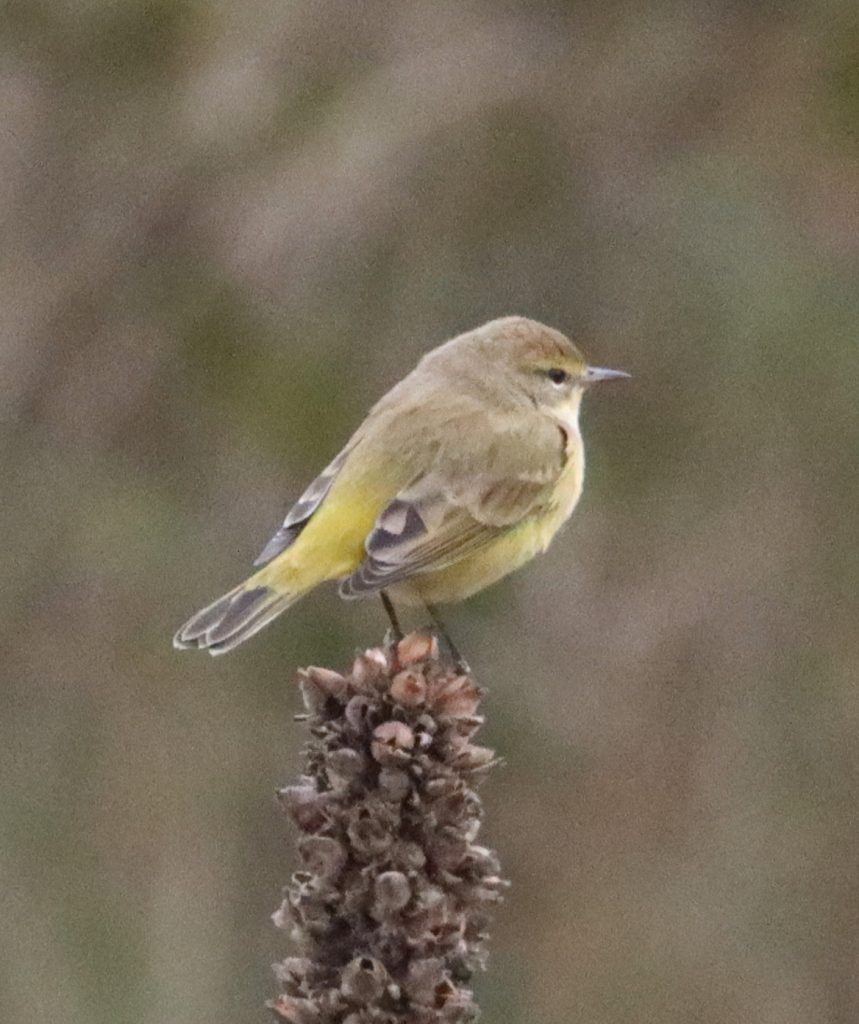
This guy clearly has a yellow rump, but is buffy yellow on the belly, with remnants of a rusty cap, and lacks the breast streaks of a true Yellow-rumped Warbler. This is a bright eastern Palm Warbler, whose most notable feature in the field is its nearly constant tail bobbing.
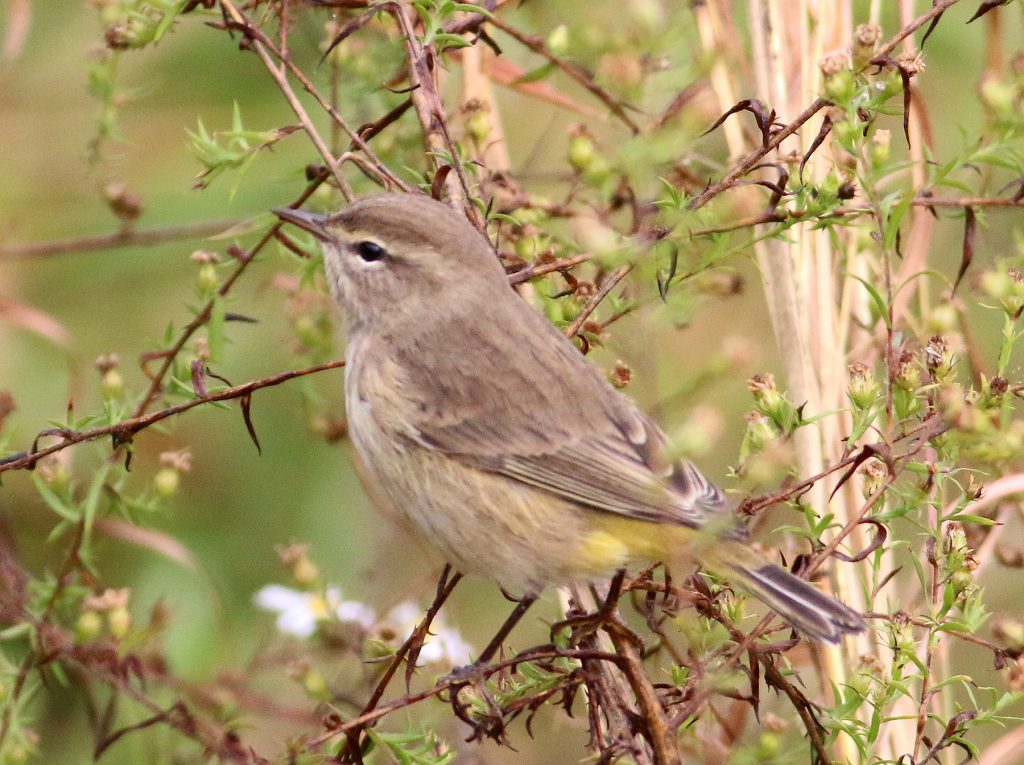
Here we have a drabber western sub-species of Palm Warbler, lacking the yellow undersides. It’s easy to see how this bird might be confused with a true Yellow-rumped Warbler, but the tail-bobbing would give it away in live view.
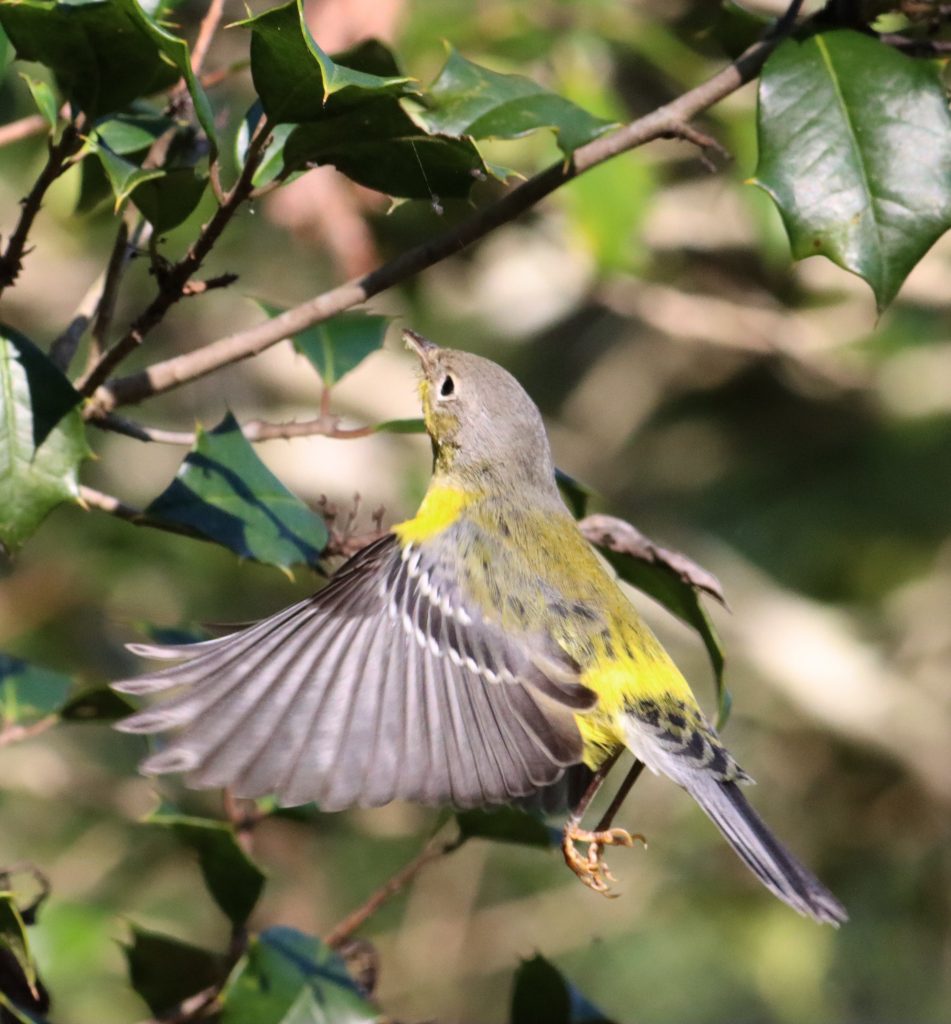
This bird, sporting a bright yellow rump patch, is a Magnolia Warbler. Magnolias differ from Yellow-rumped Warblers in nearly every other way, so they are not easily confused if we take the time to examine the entire bird. Visible in this photo, Magnolias have a bright white eyering, two white wing patches, and have a bright yellow breast. But if your only view is from the back, it is best not to come to a hasty decision after seeing just that bright yellow rump patch.
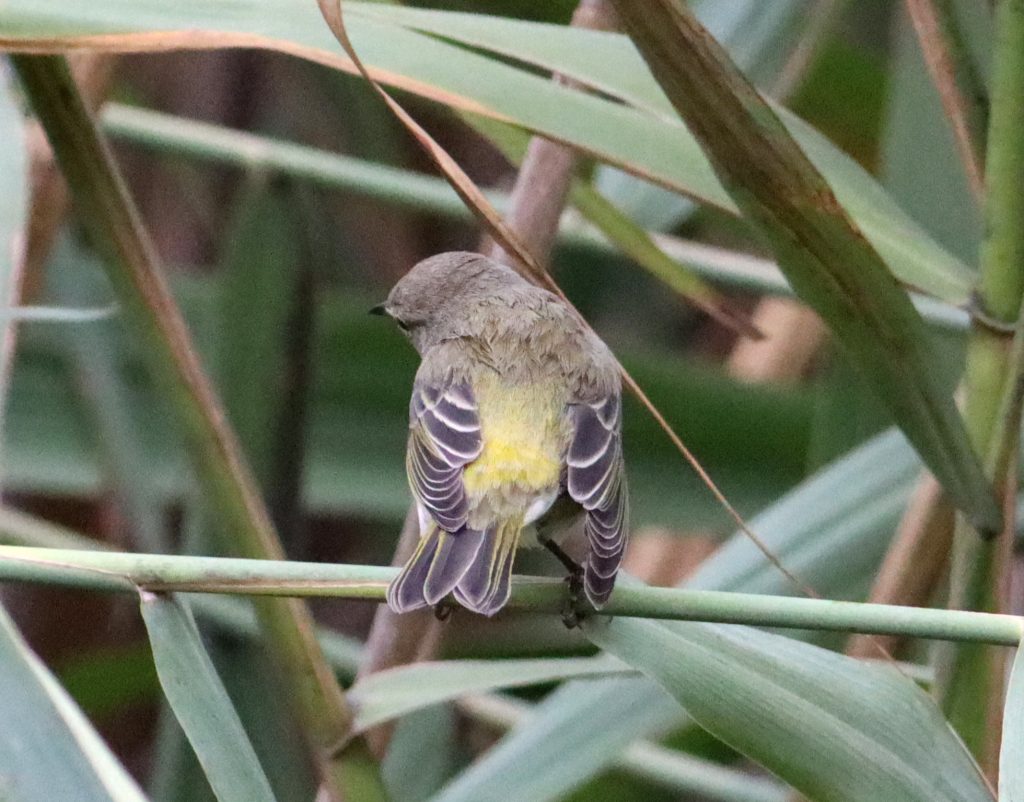
Here’s another warbler with a yellow rump, with little else visible, except for an overall drab gray color and yellow edging on the tail feathers. Could it be a Yellow-rumped Warbler? Decide after you see the next photo, after it turns sideways.
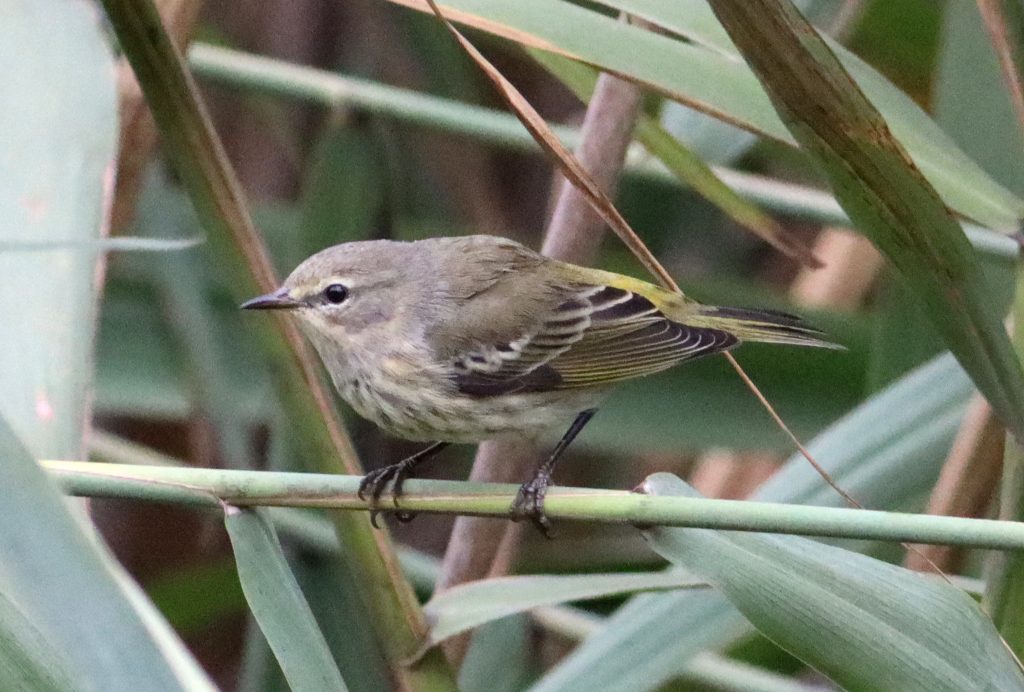
Here is that same bird turned sideways, giving a better field-guide view. It does have streaky sides on a dull-ish breast, similar to real Yellow-rumped Warblers, but there is no yellow patch on its side, and the wings have yellow edges to them, with a partial white wing patch. This is a drab fall Cape May Warbler (perhaps a first-year female?), easily confused with a Yellow-rumped Warbler.
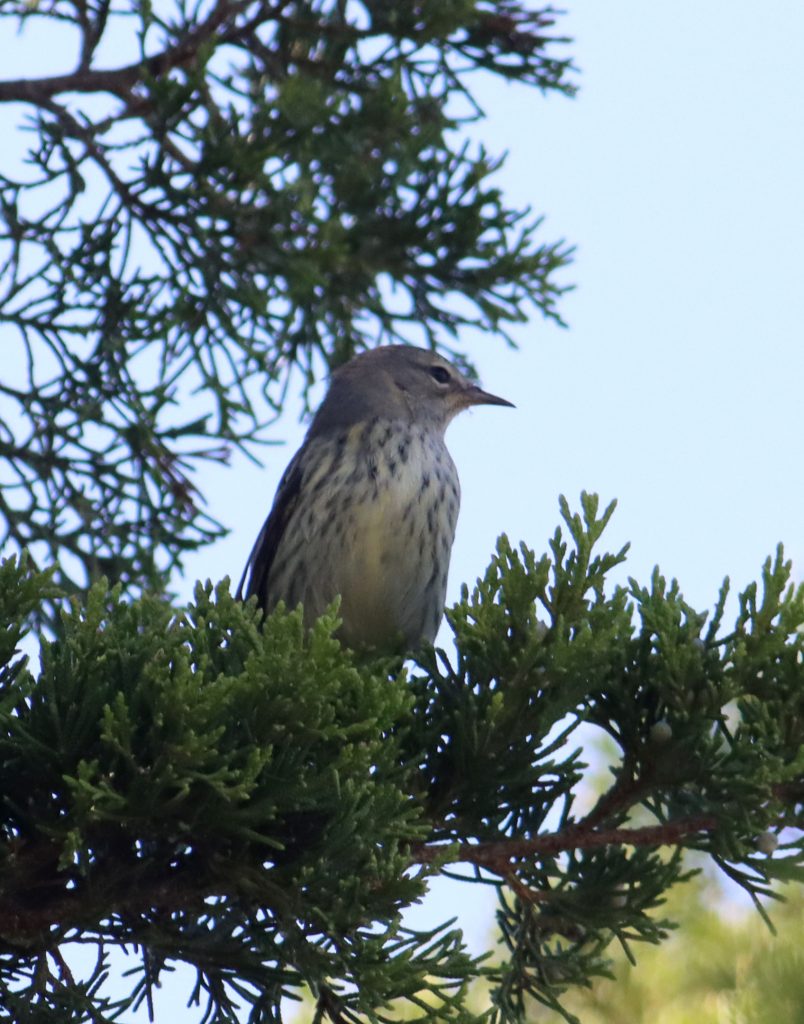
Here we have a frontal view of another drab Cape May Warbler, showing that the breast streaking continues across the entire breast, not just the sides. Also, as is seen here, the bill of Cape May Warbler is more pointed than that of a Yellow-rumped Warbler.
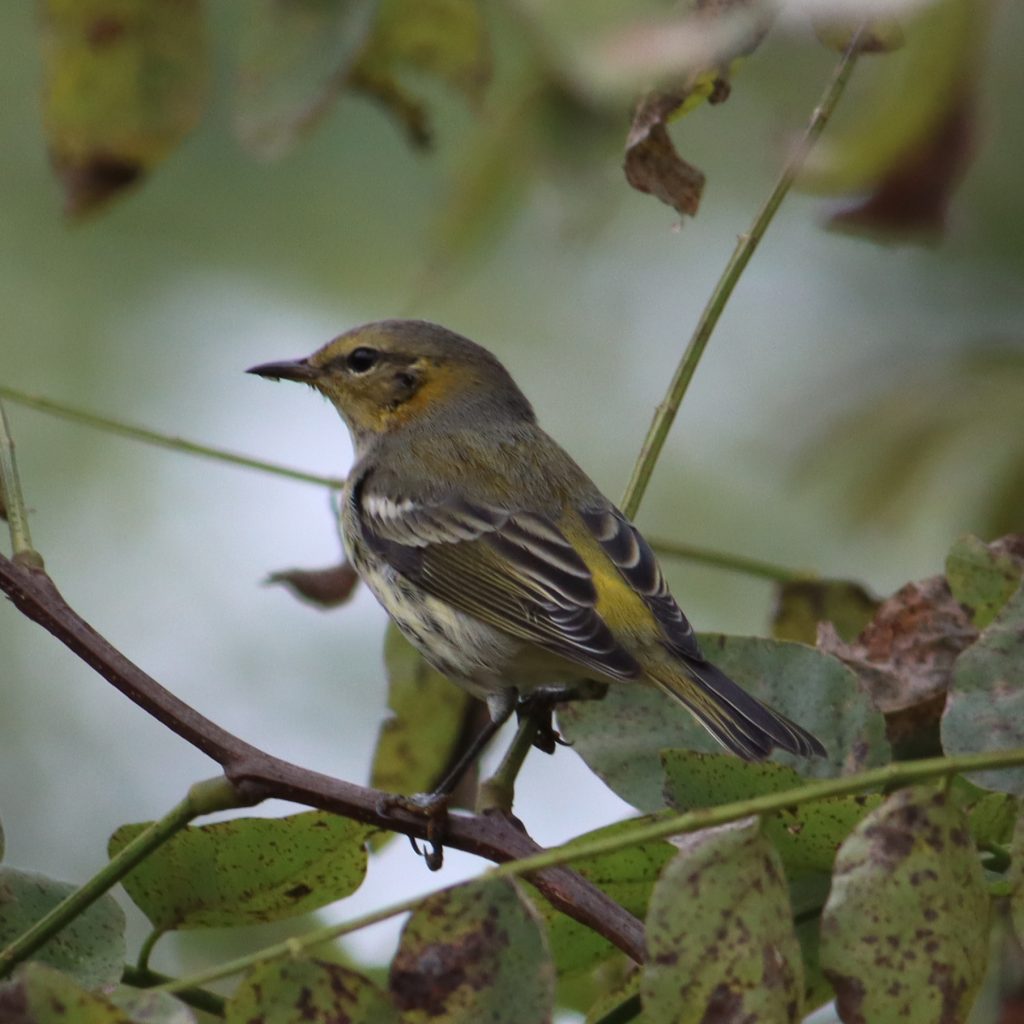
This is a brighter Cape May Warbler in fall, showing the yellow rump that is the topic of this post, but also showing a bit more yellow color on its face that is inconsistent with being a Yellow-rumped Warbler. Note also the yellow edging to the tail and wing feathers and the white wing patch.
So there you have it; we have at least four warbler species with yellow rumps, only one of which is a capitalized Yellow-rumped Warbler. We can take that fact in either of two ways: (1) we can curse the birding gods and the nomenclaturists for confounding and confusing us, or (2) we can have a healthier attitude and say that a yellow rump is simply a great field mark that helps to narrow down the number of possibilities for the warbler we are examining, and seeing it eliminates many other warbler species. I fall into that second camp, using rump color as an important criterion to differentiate the fall warblers.
